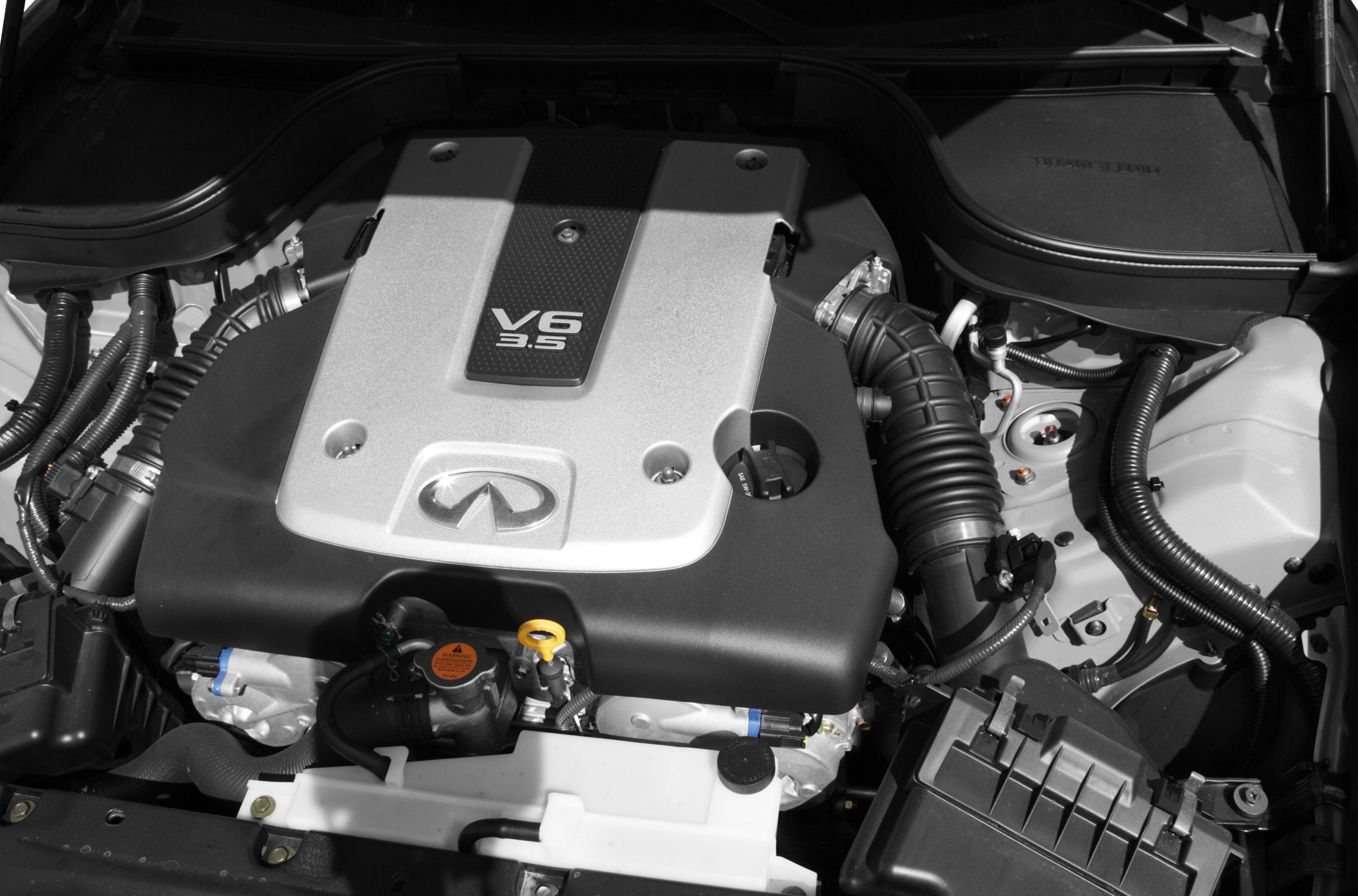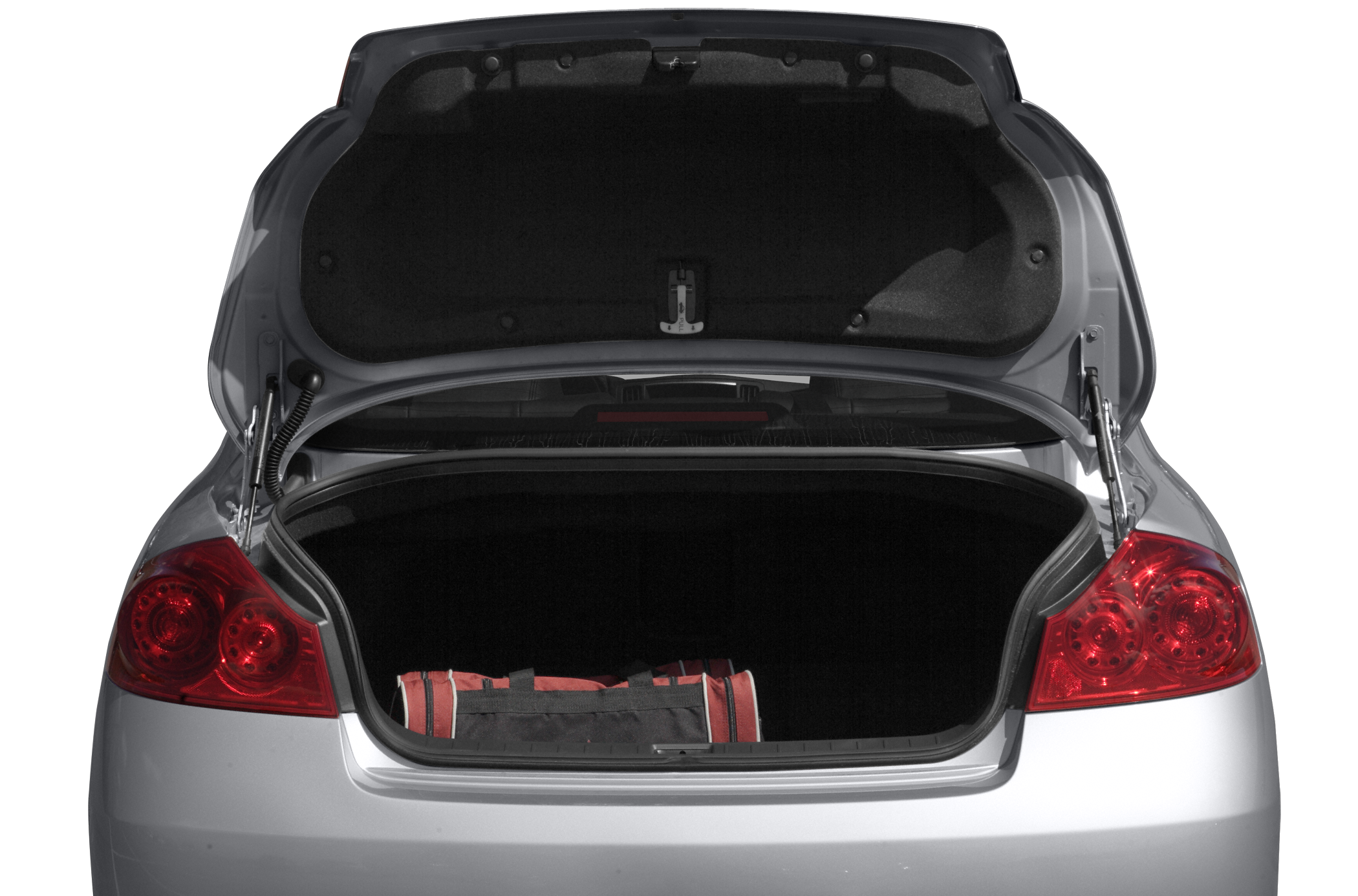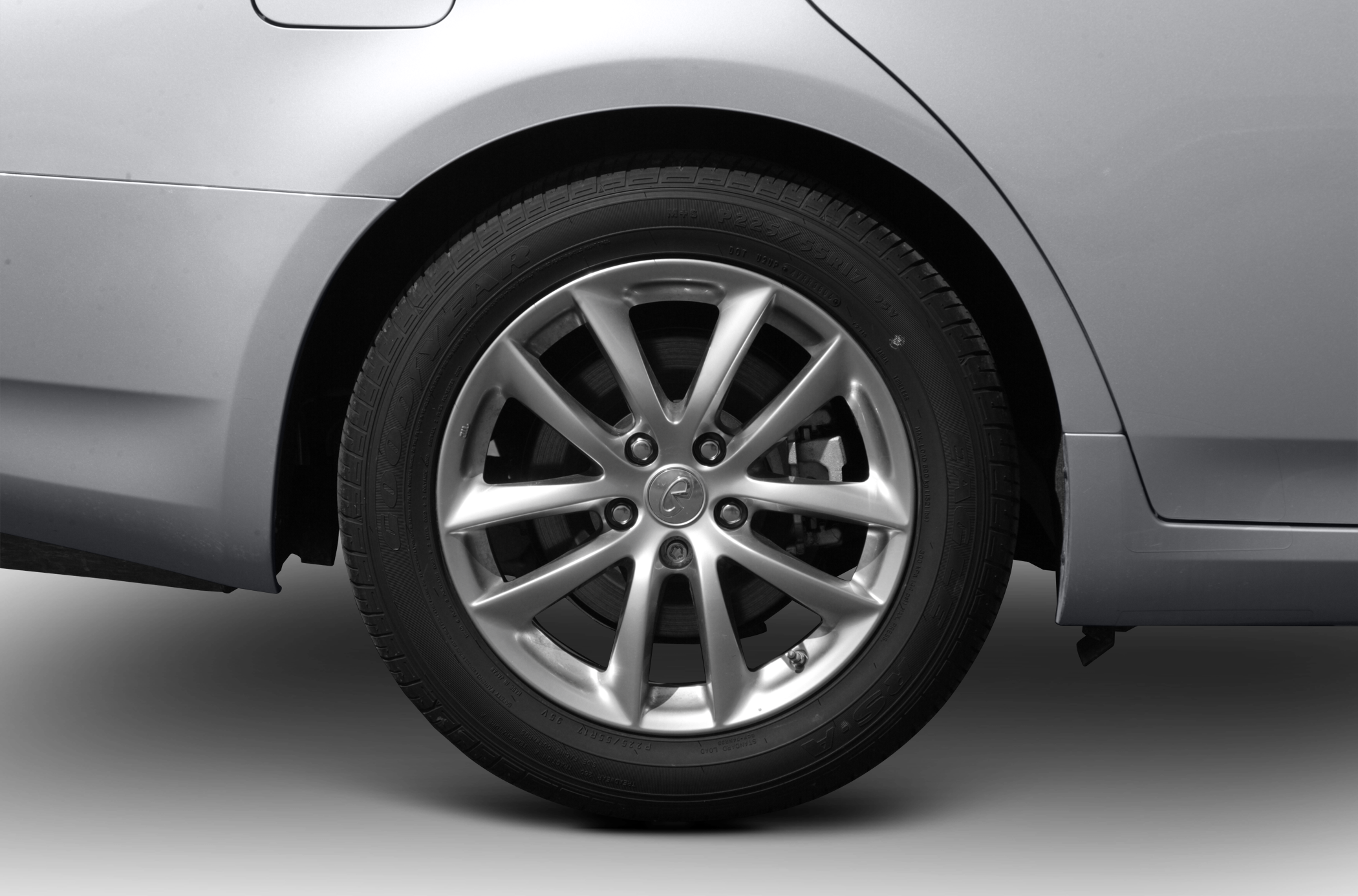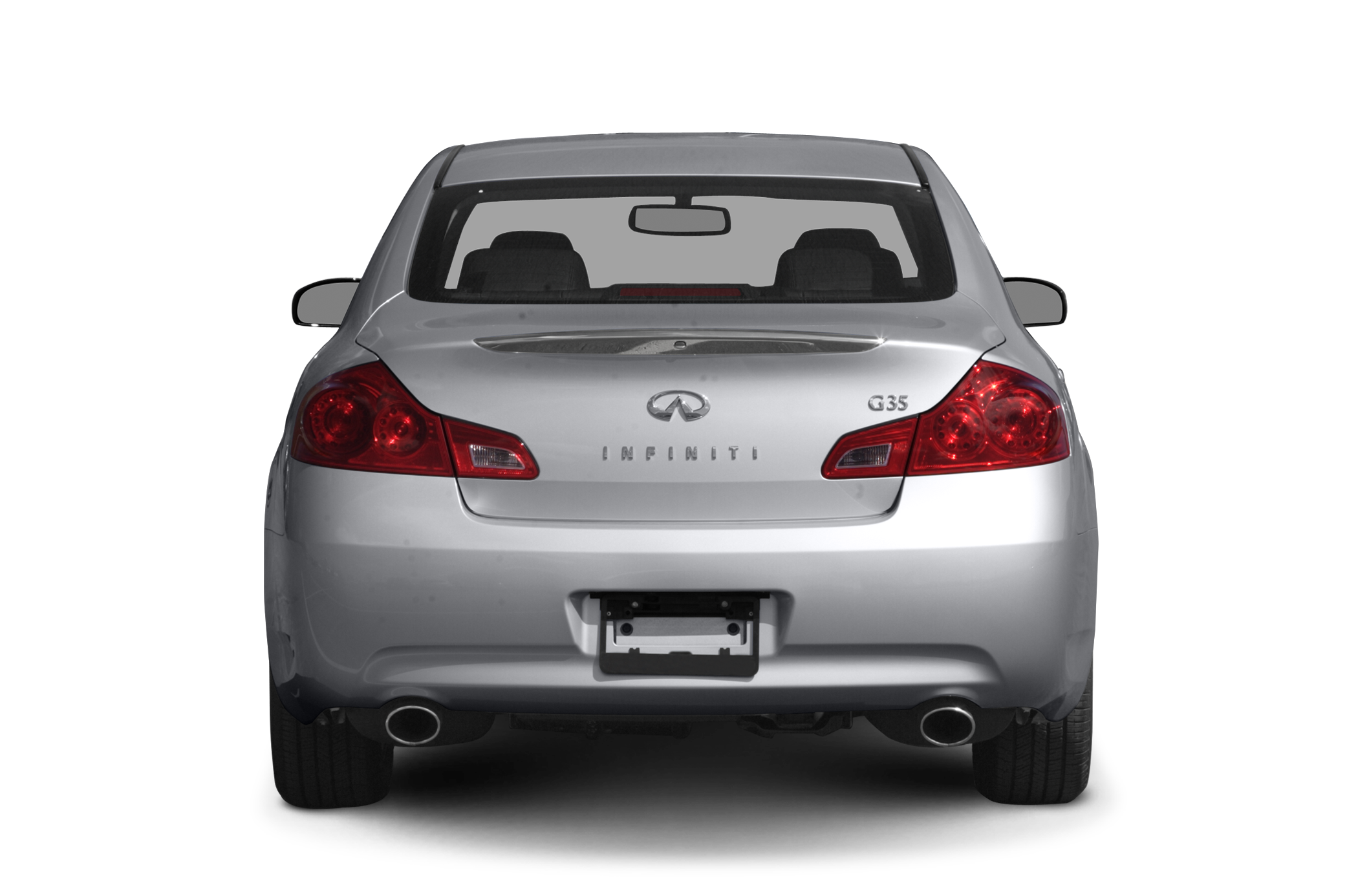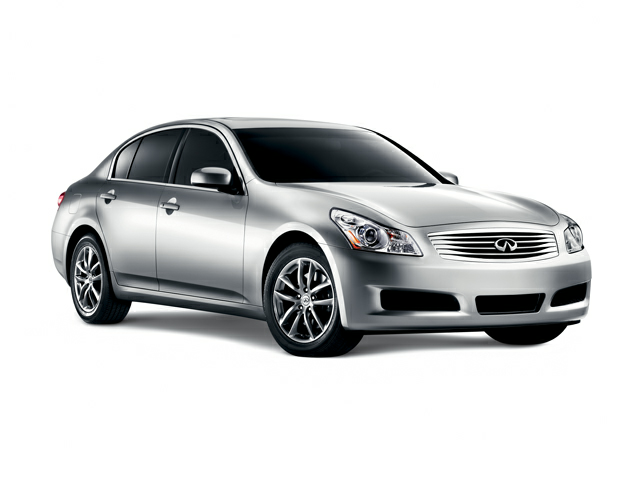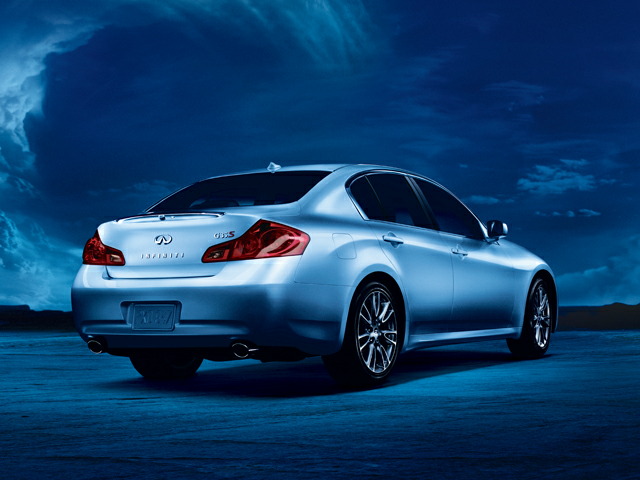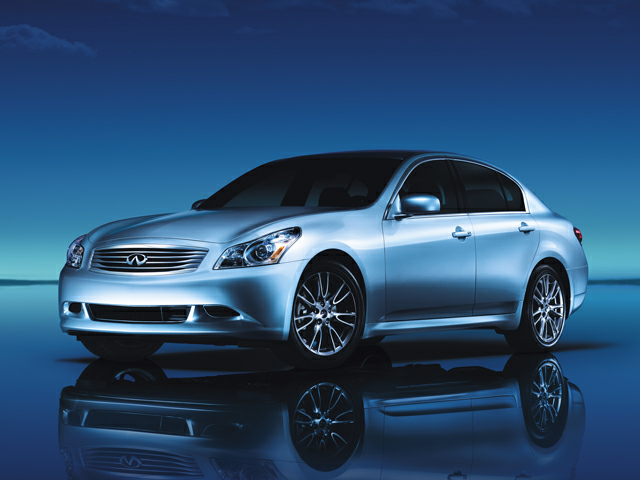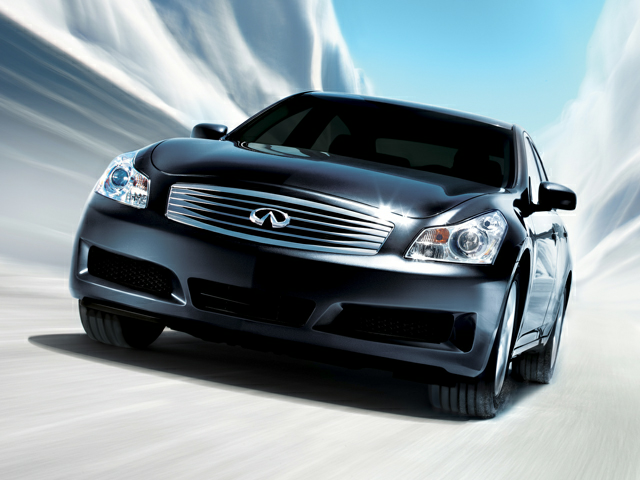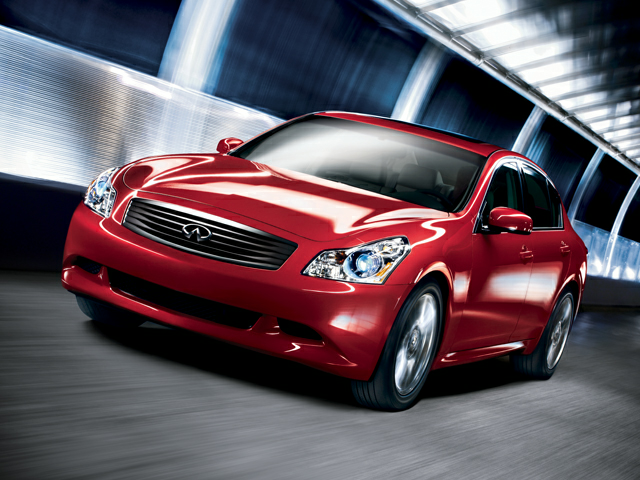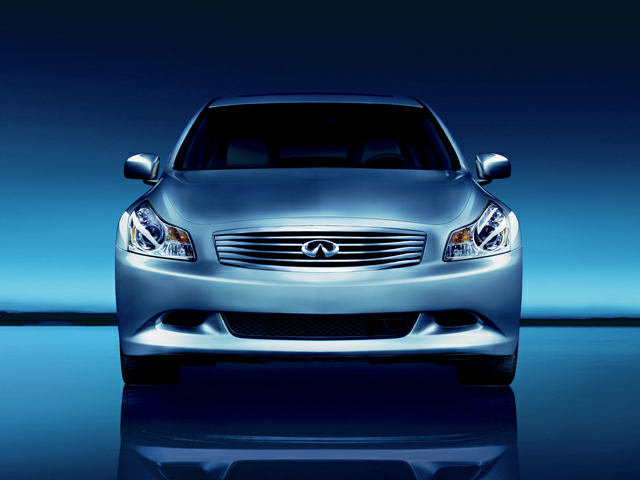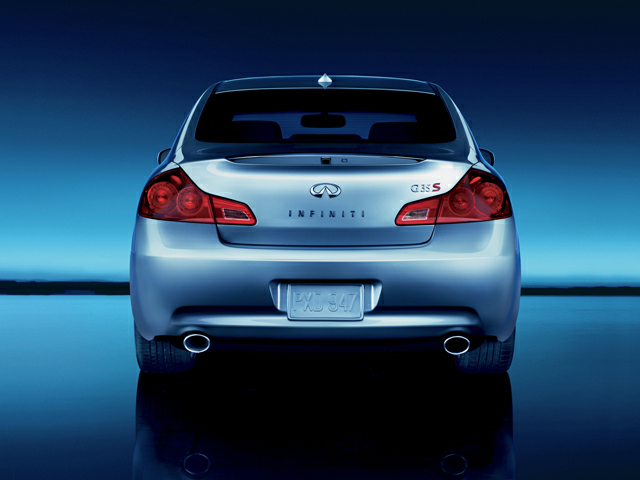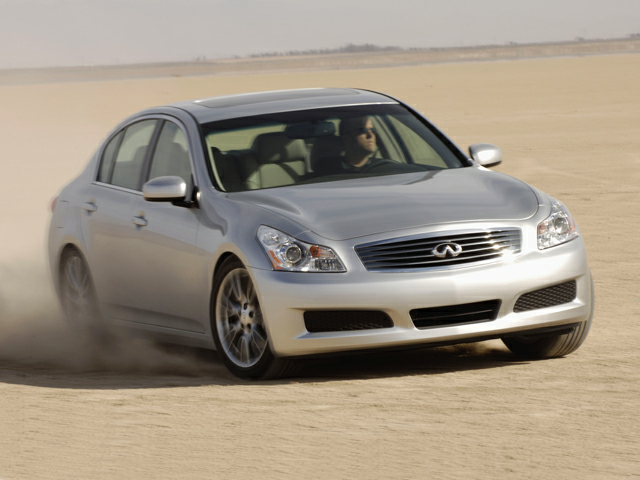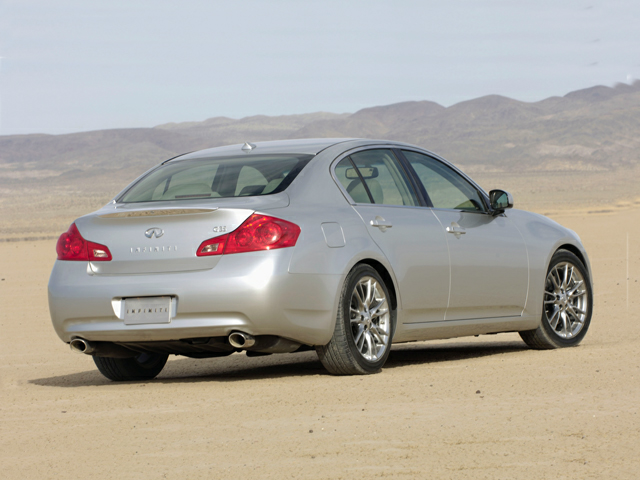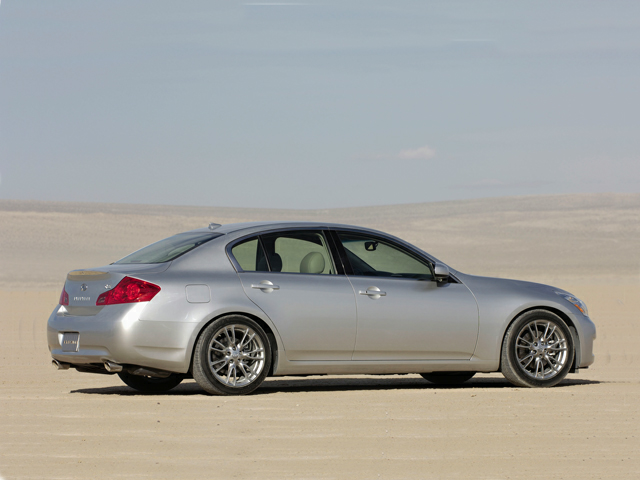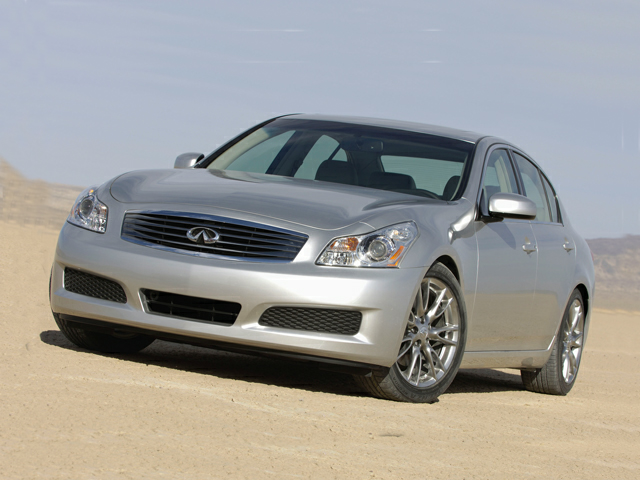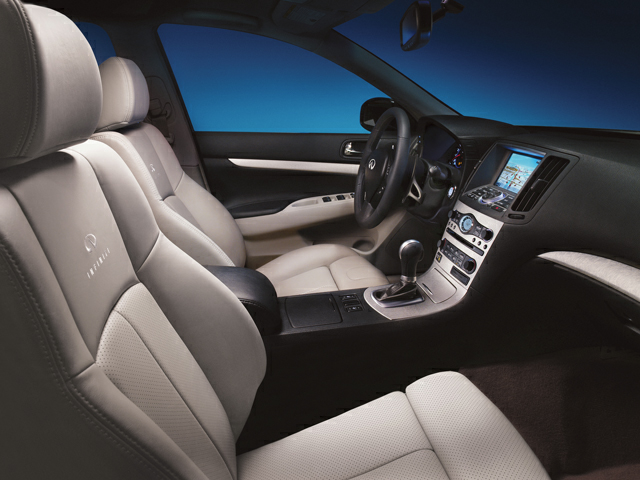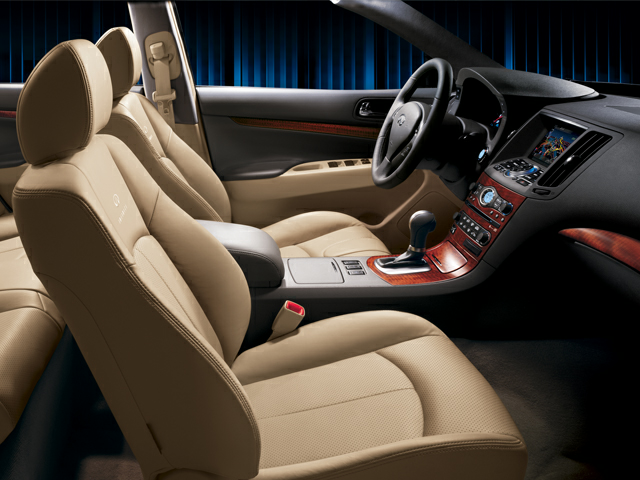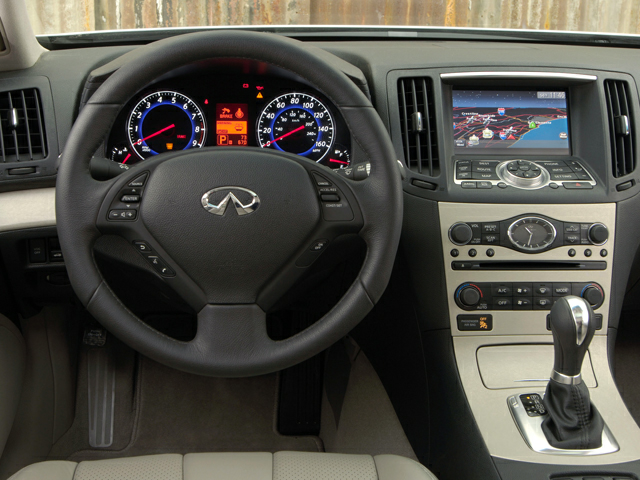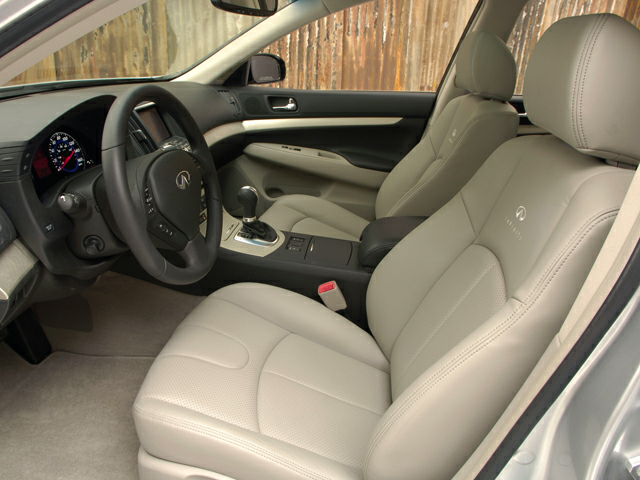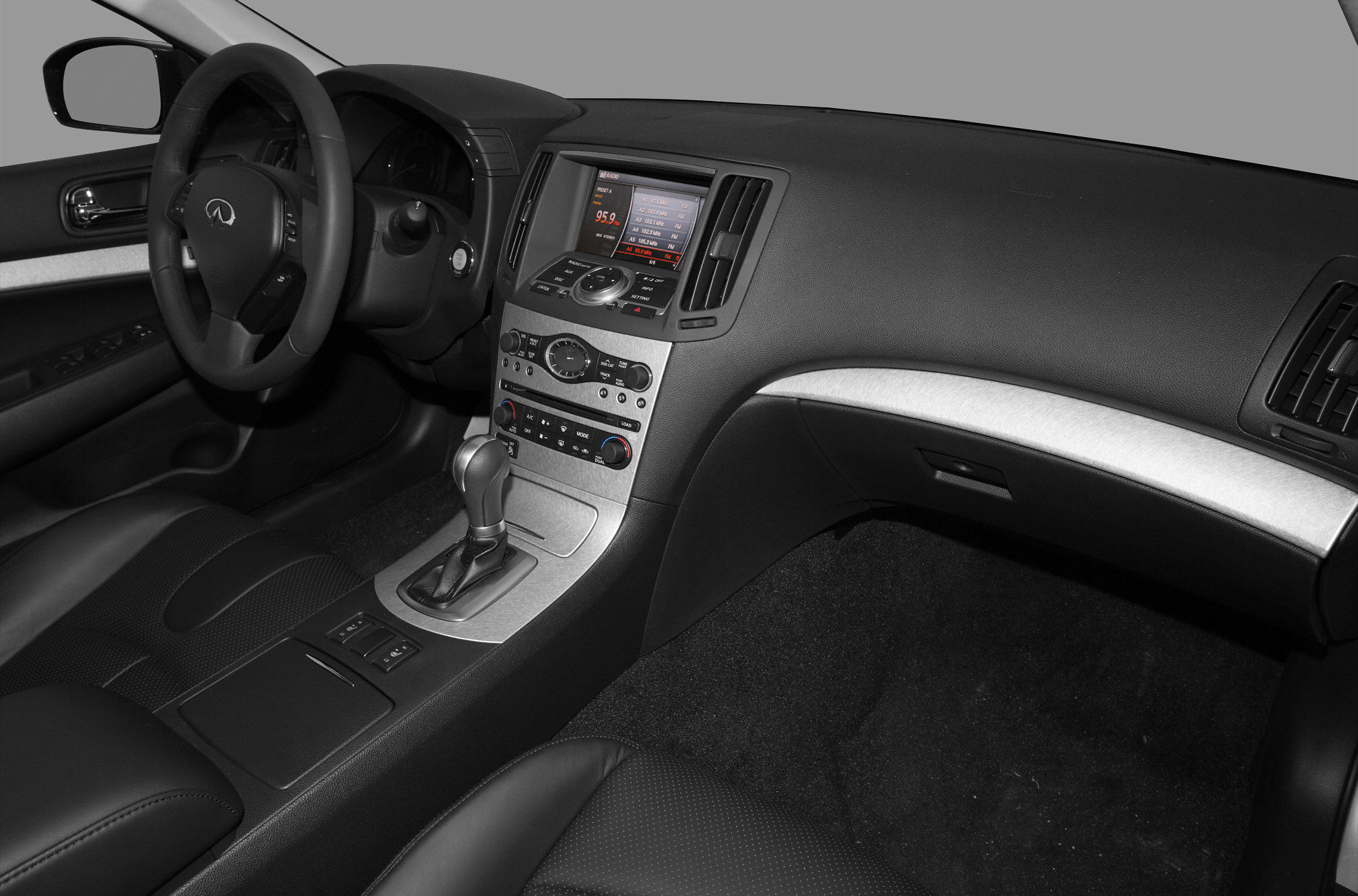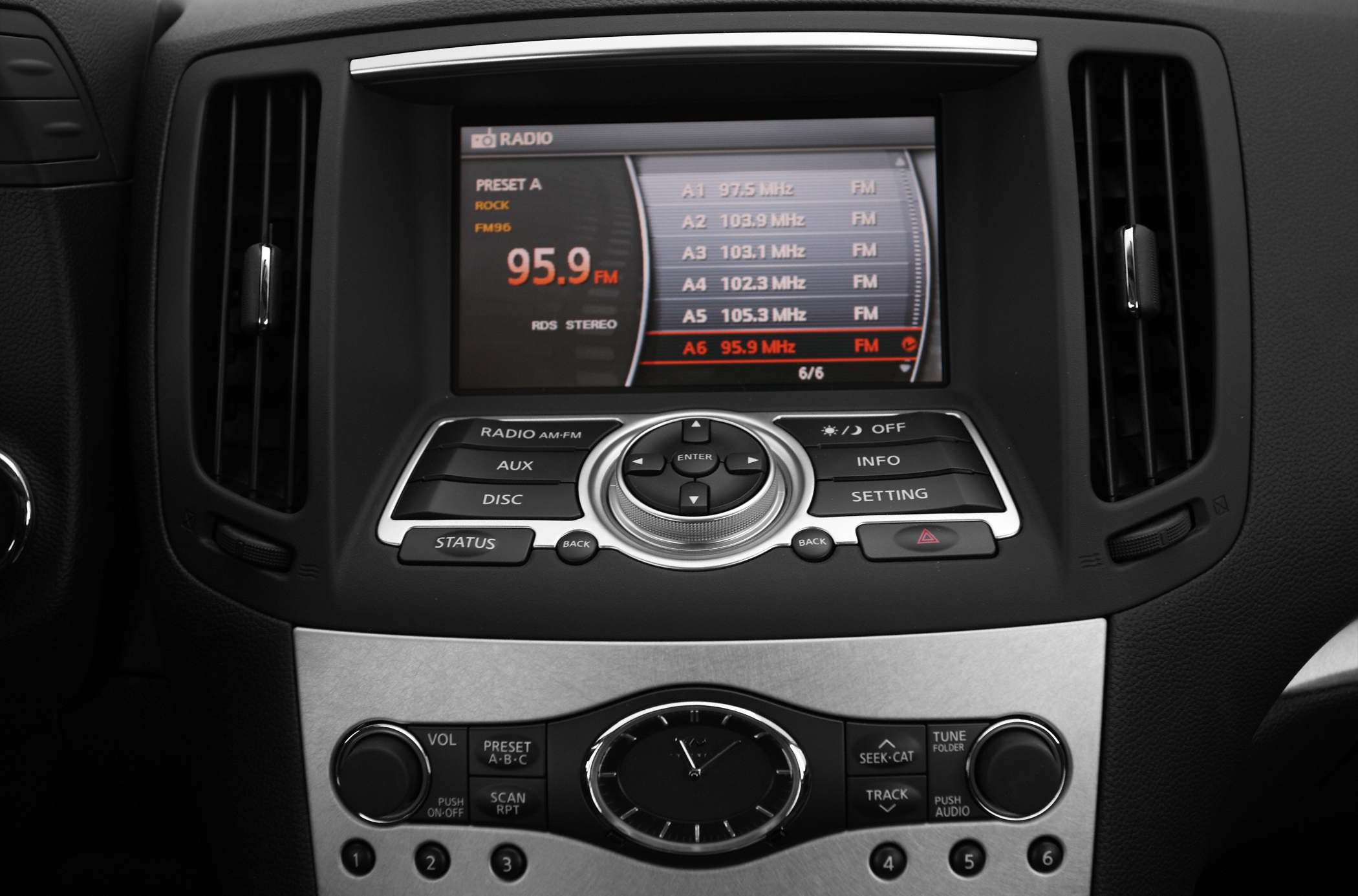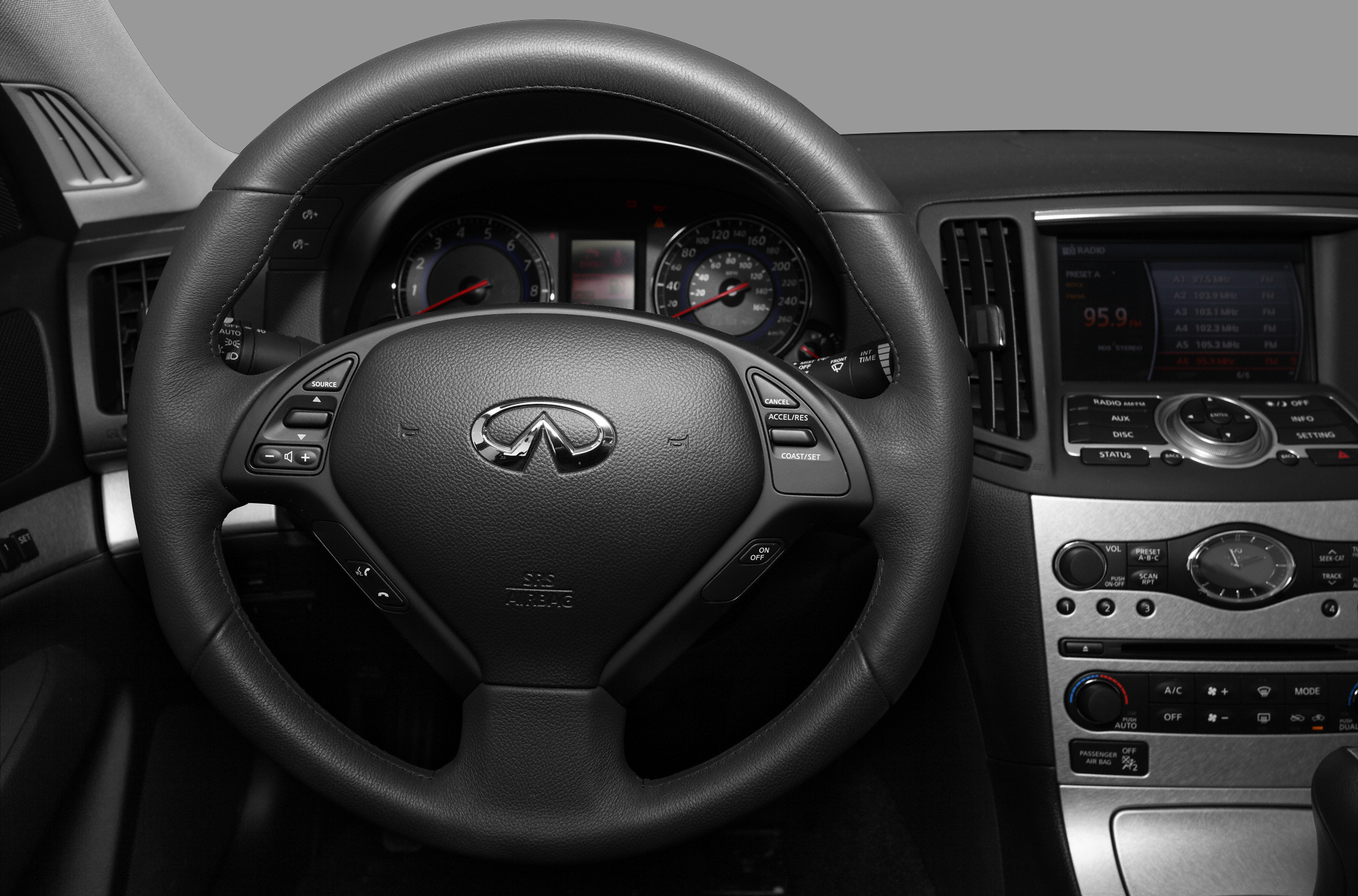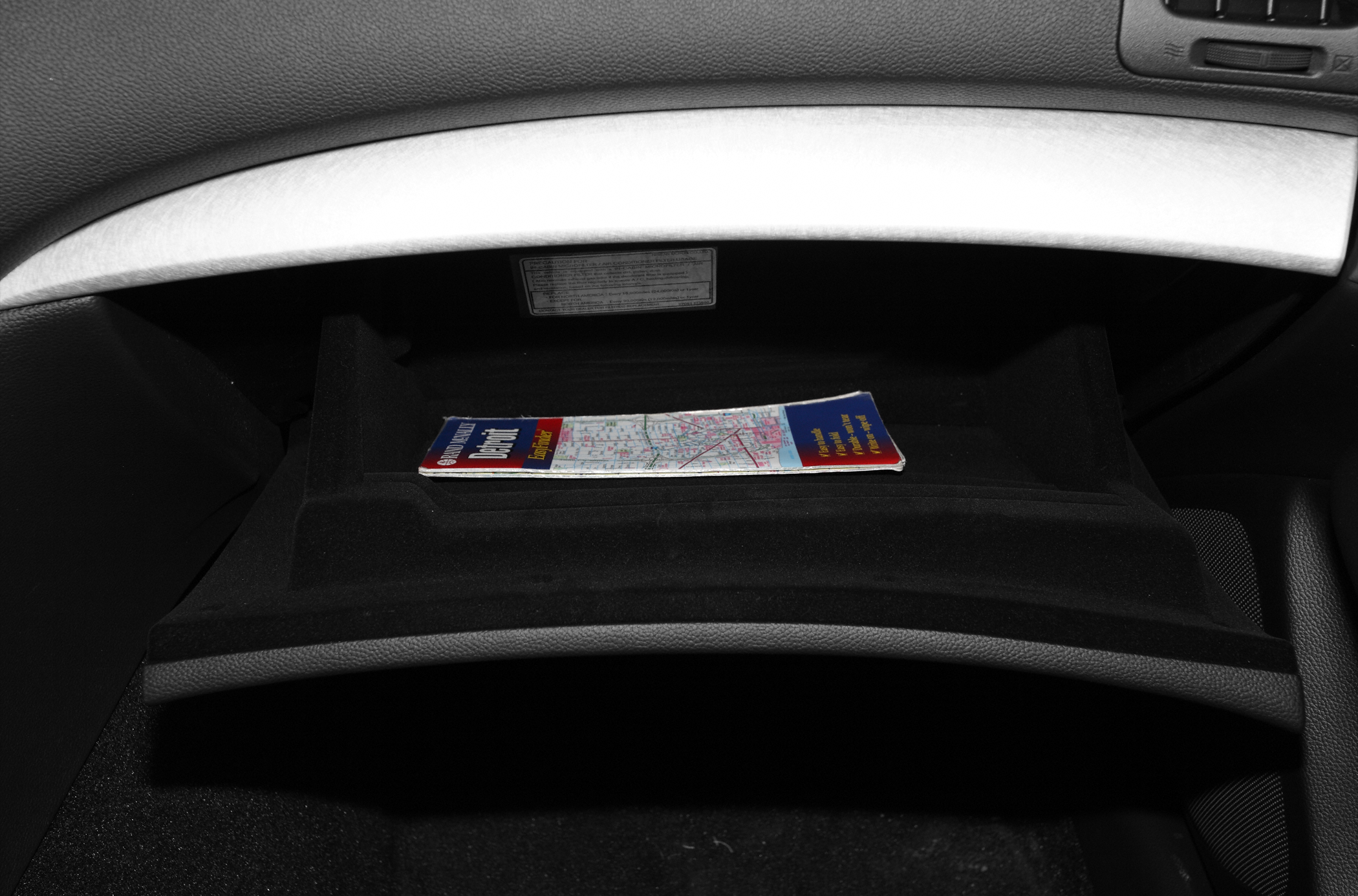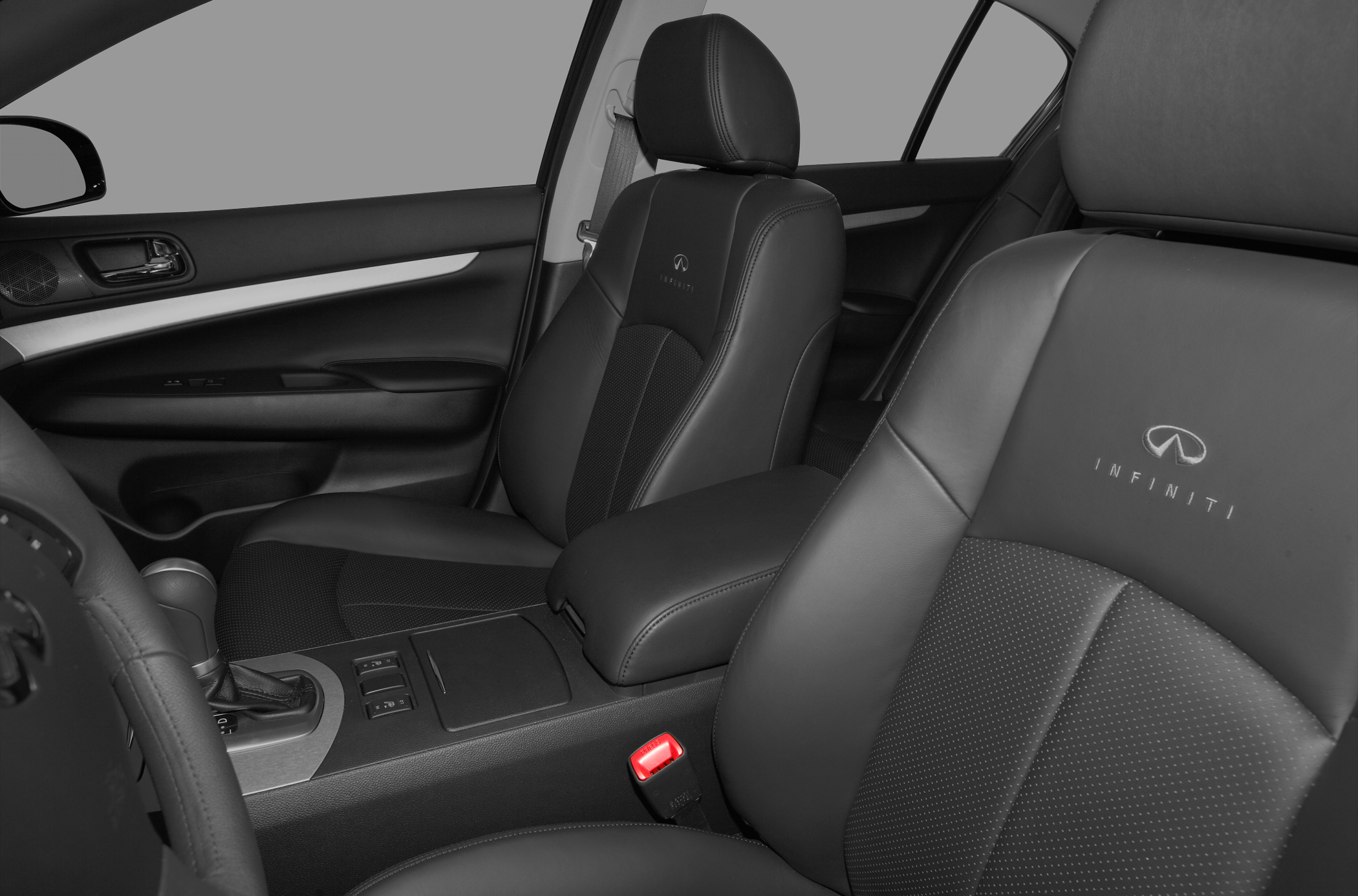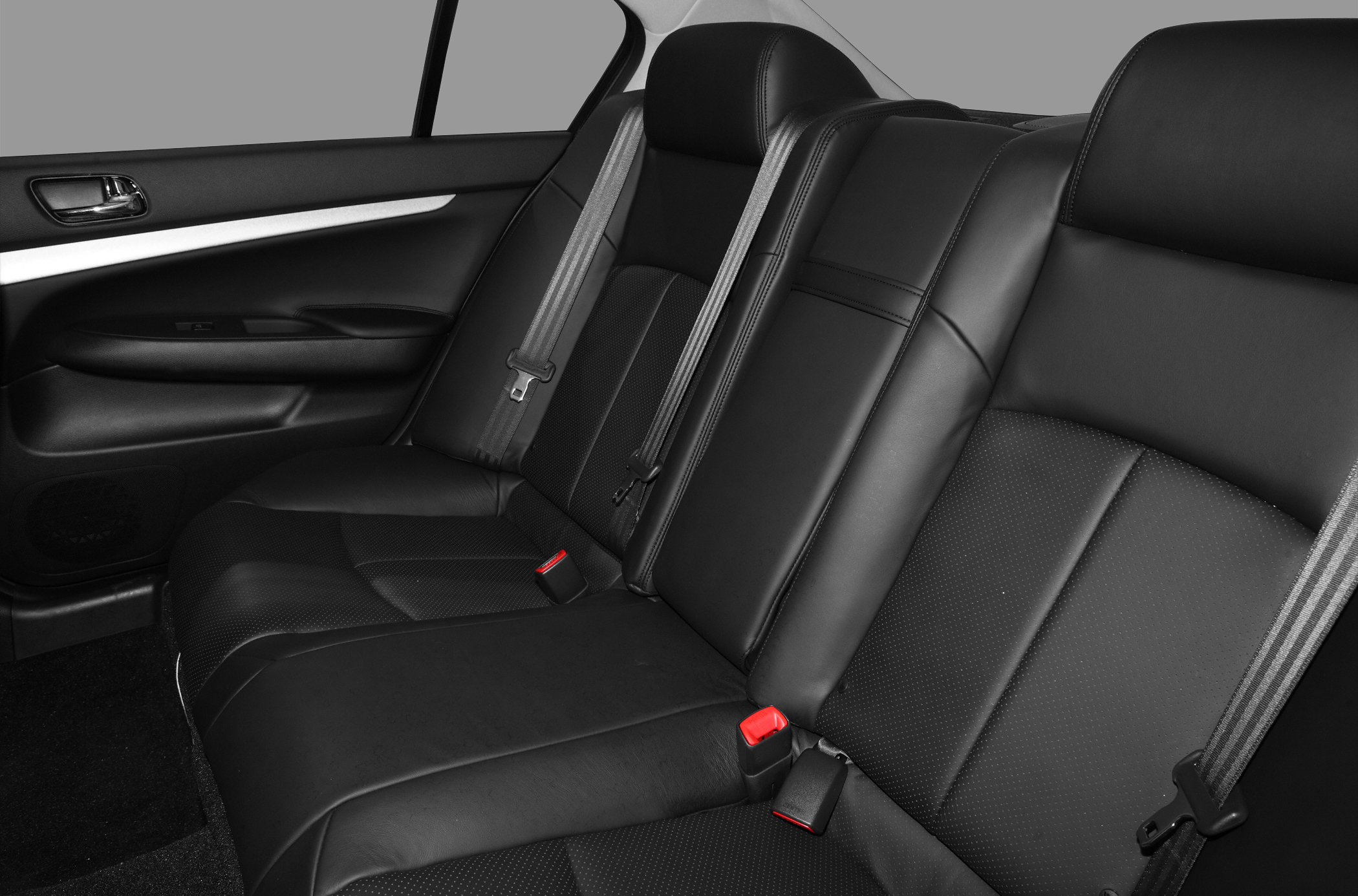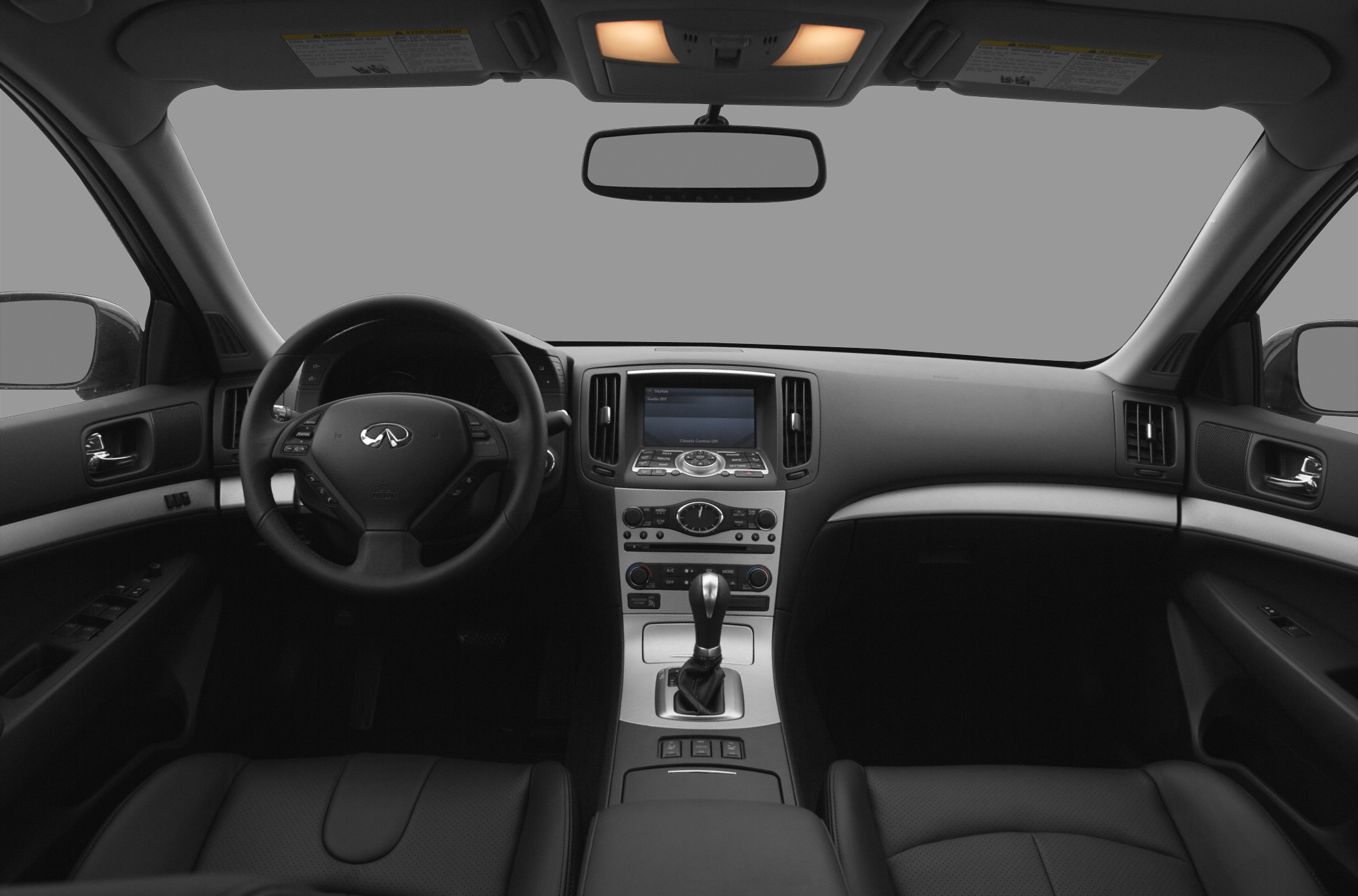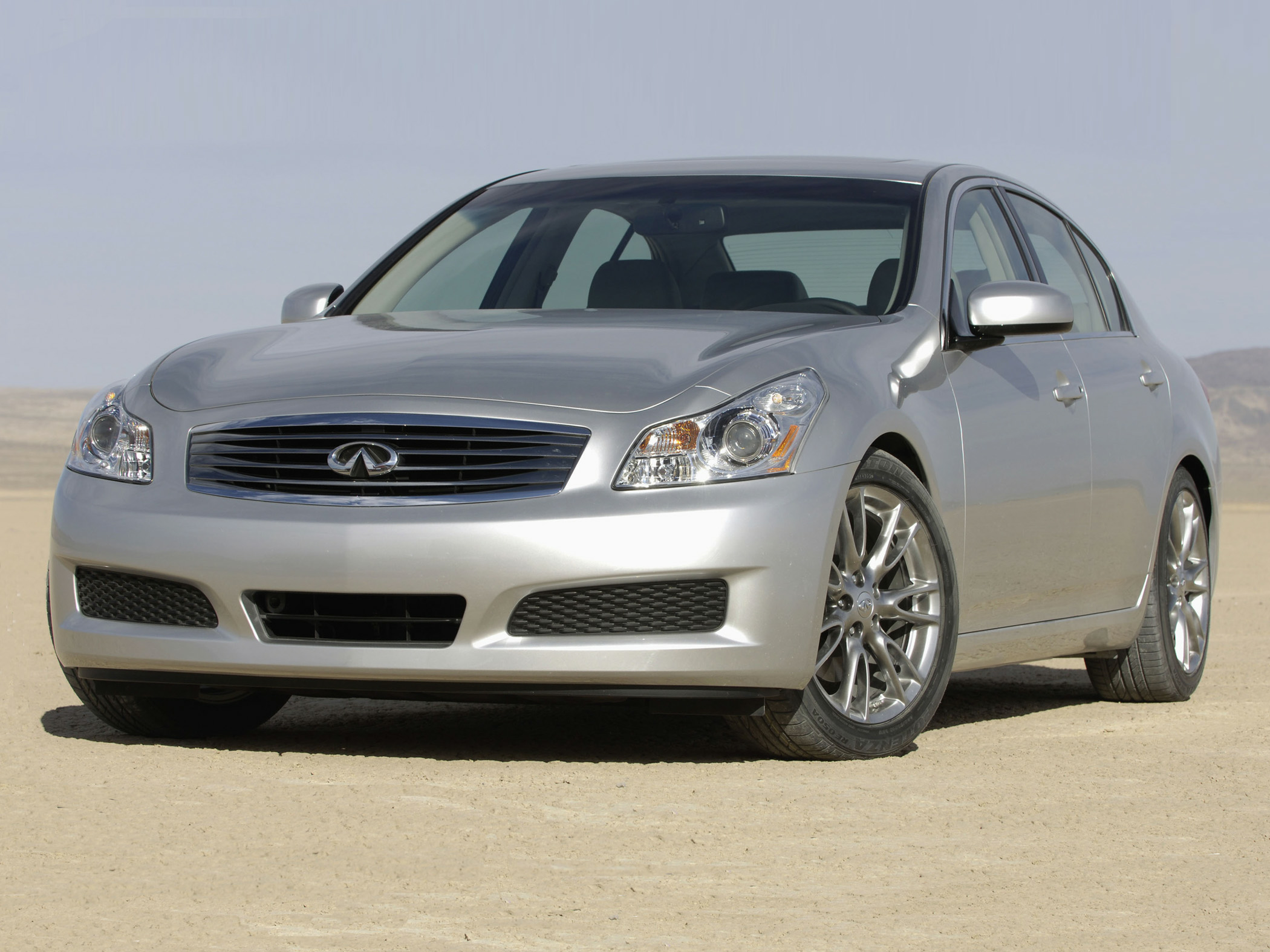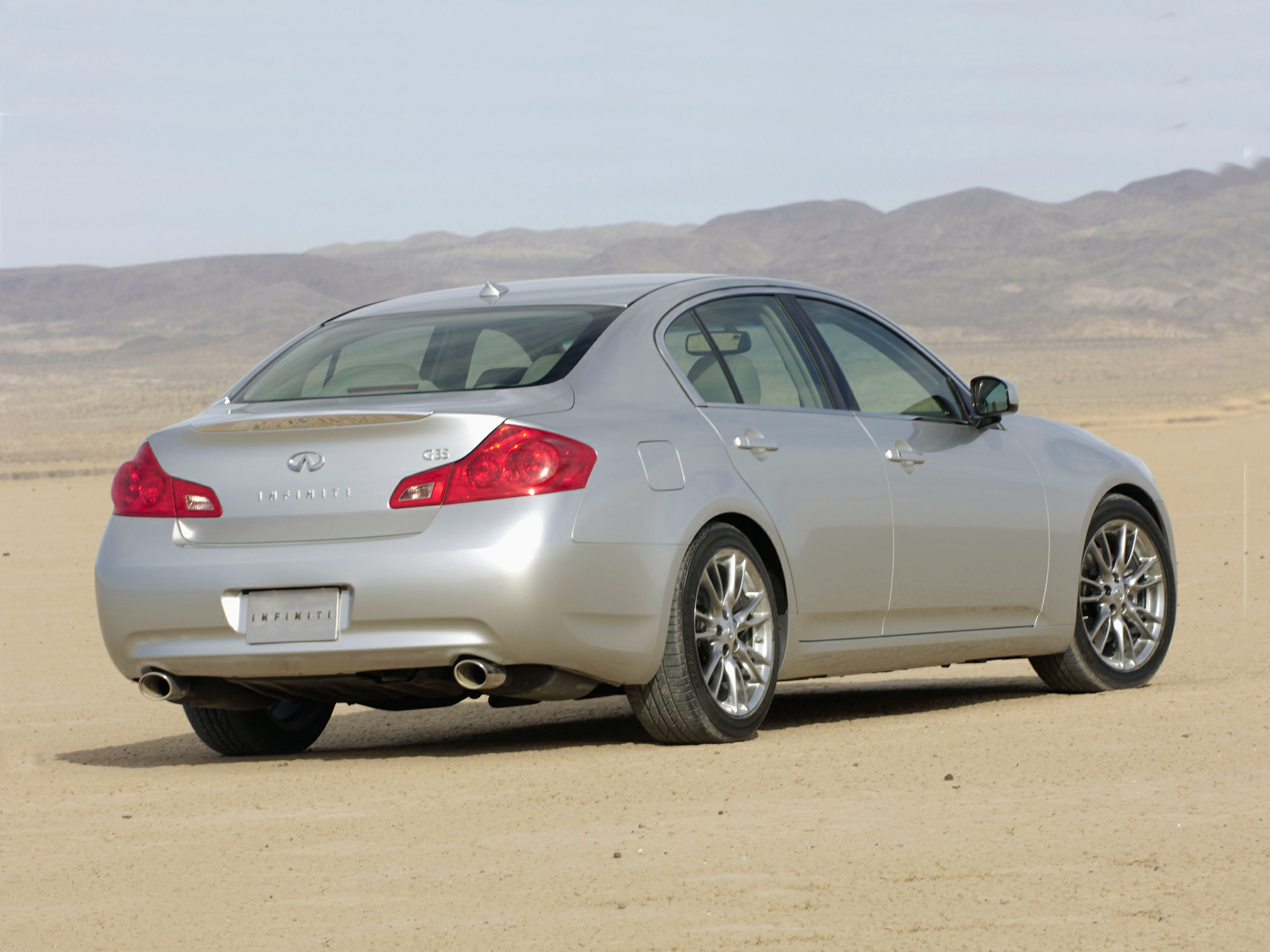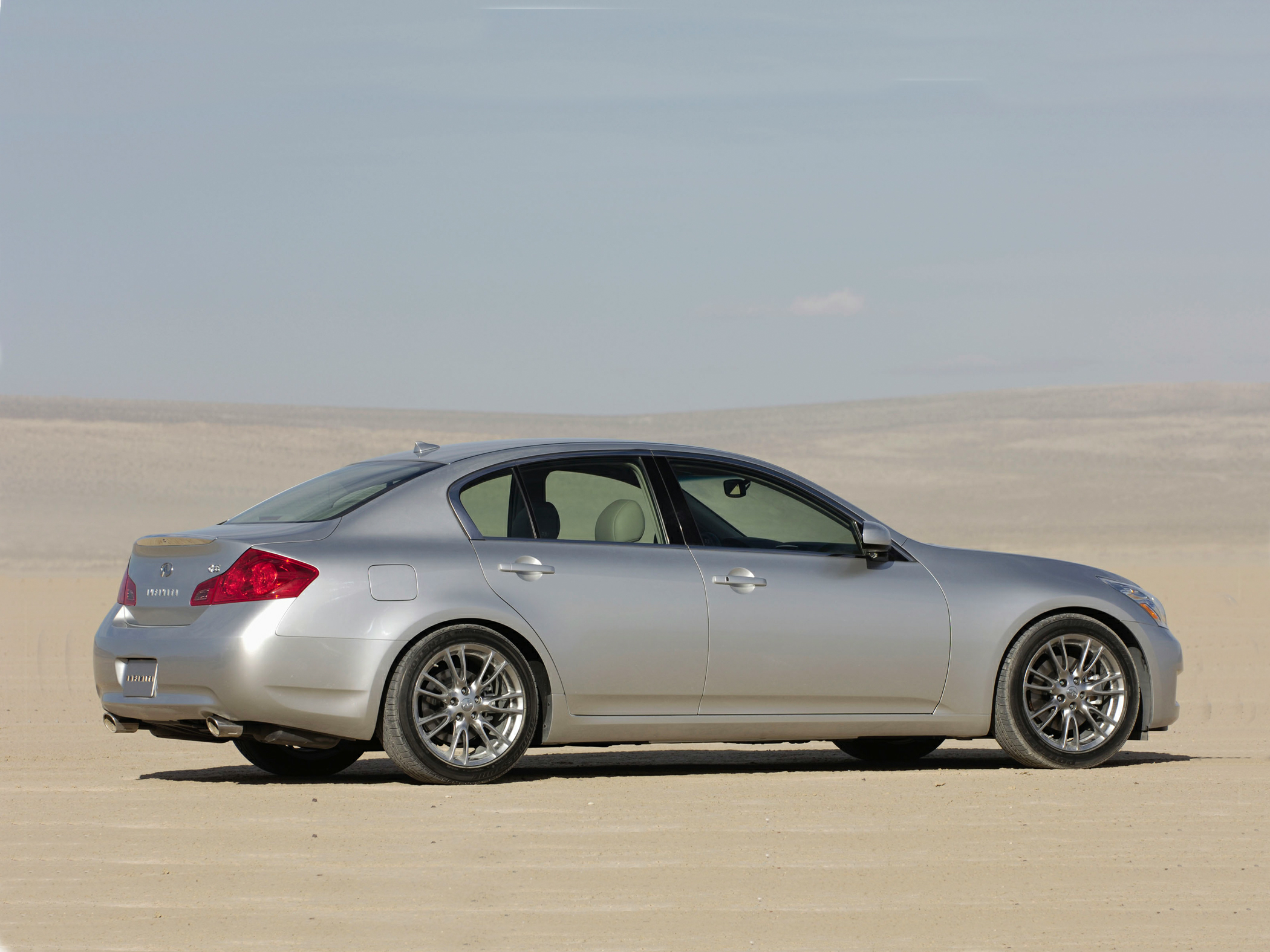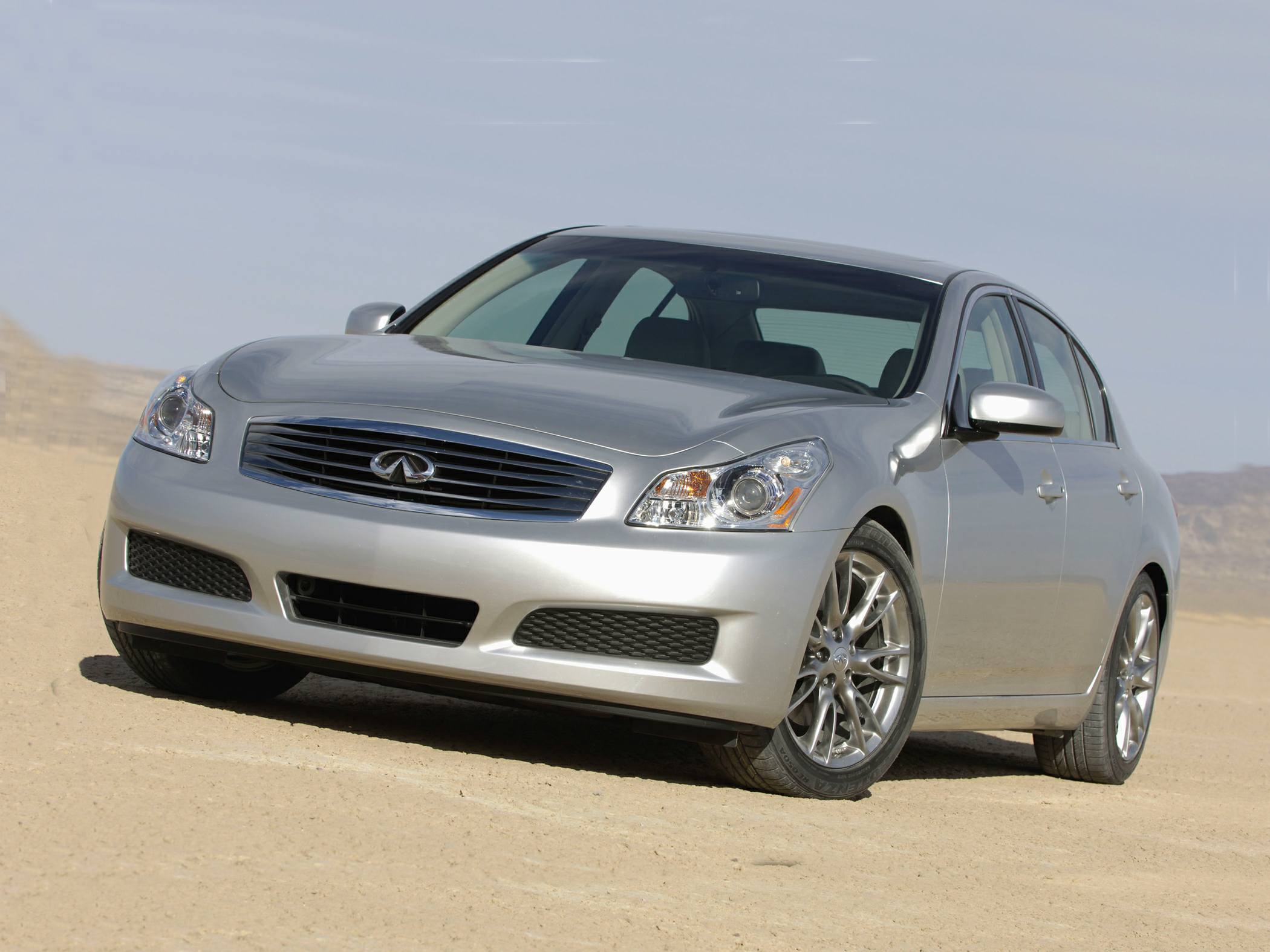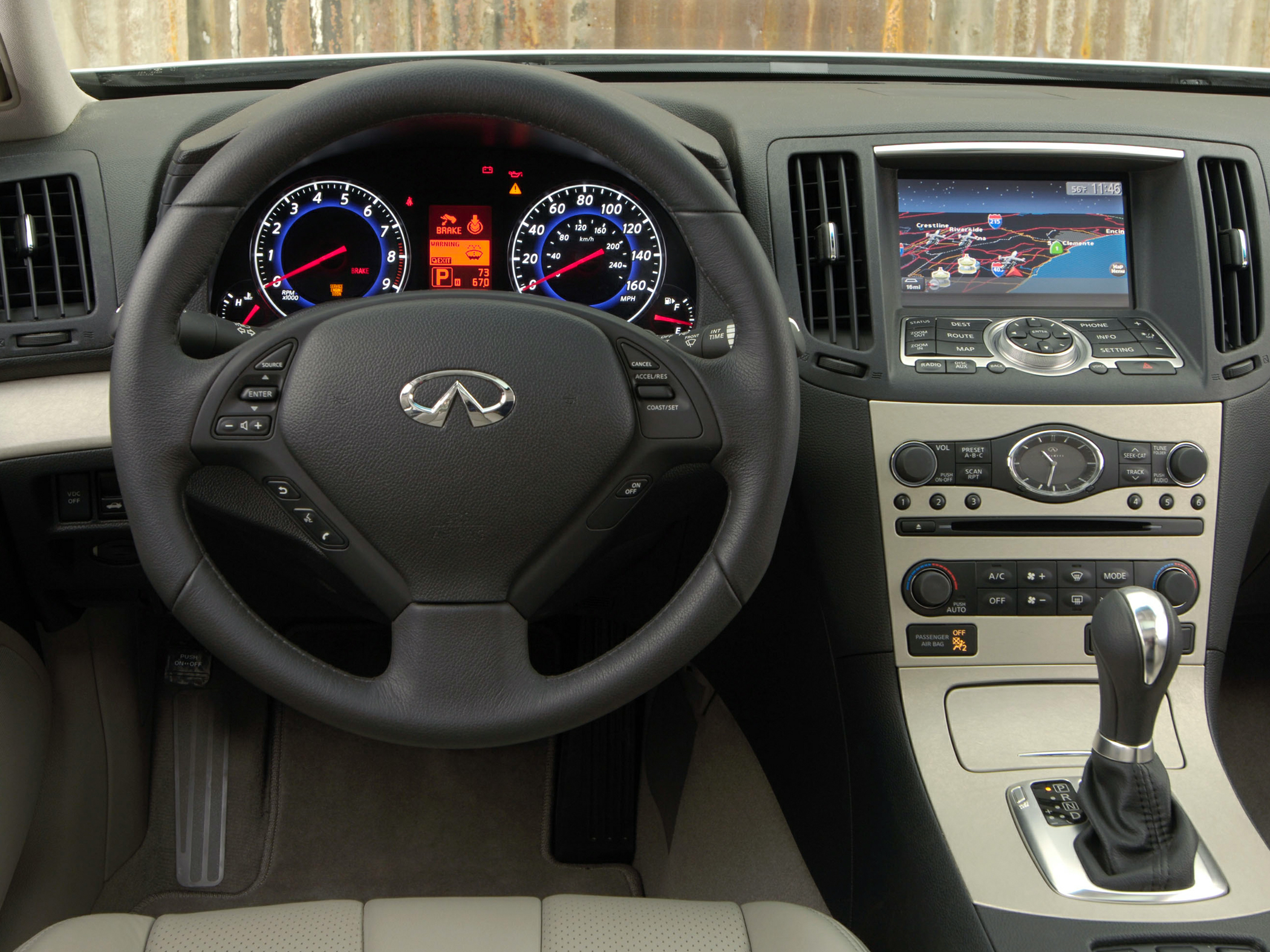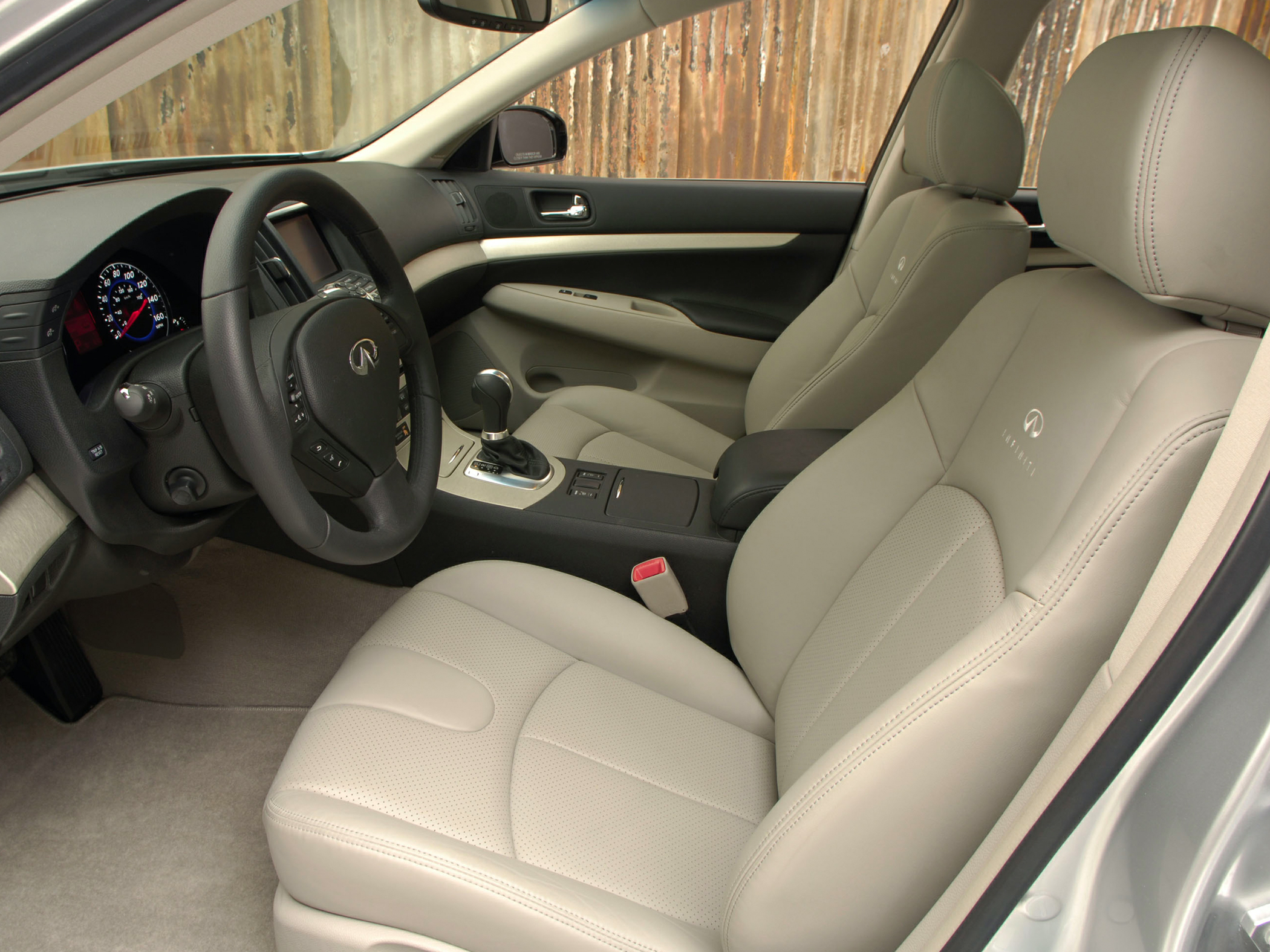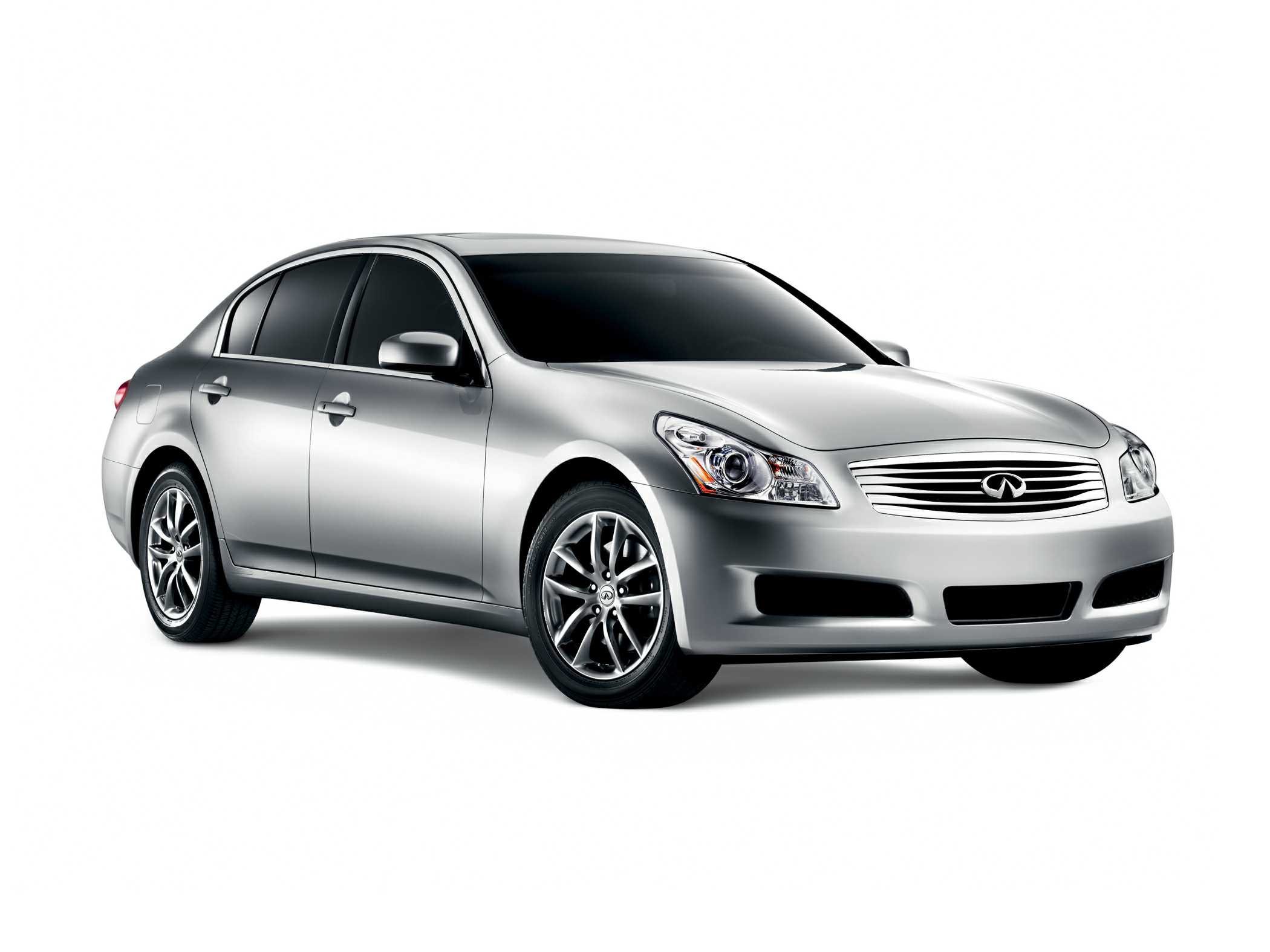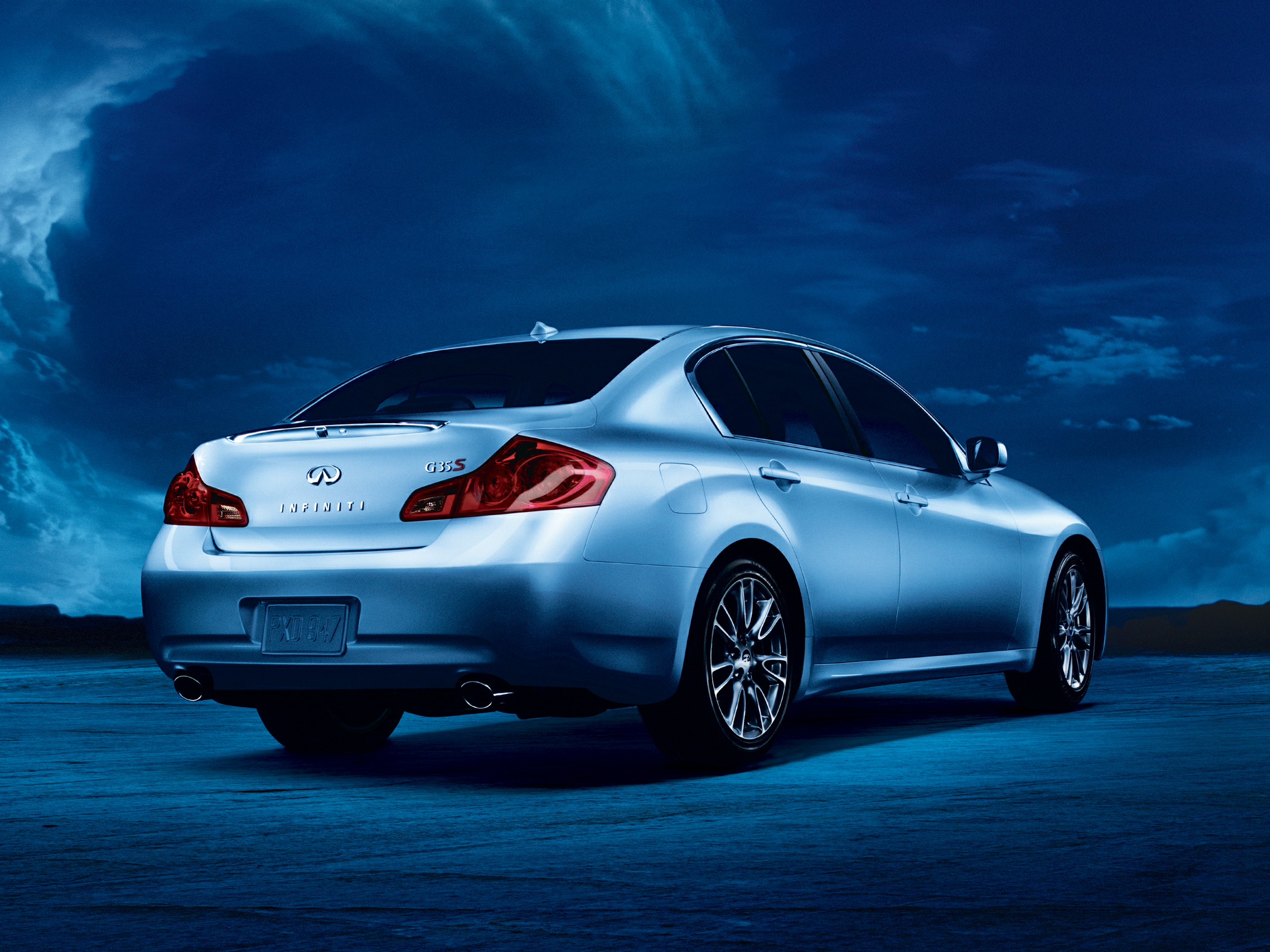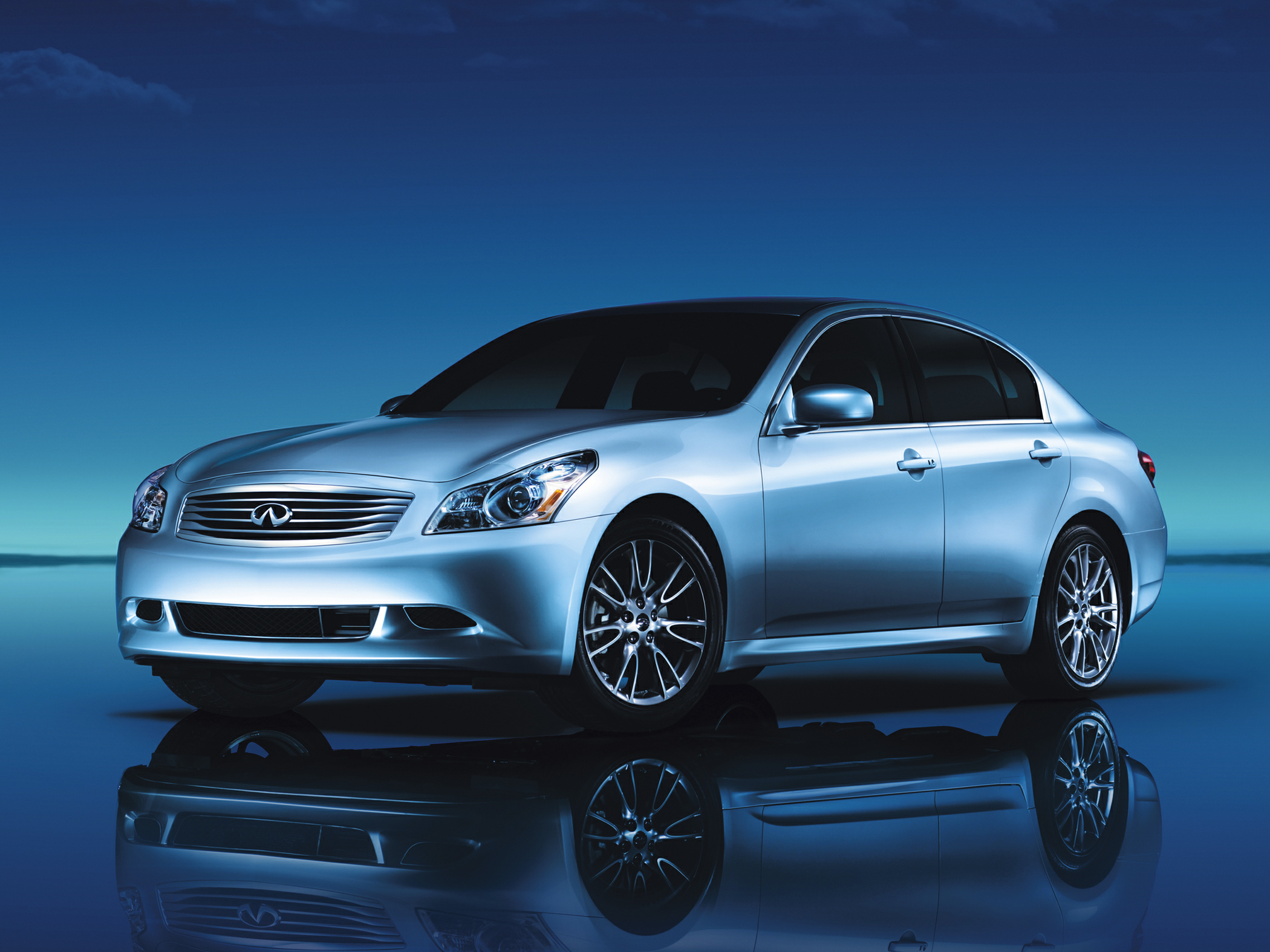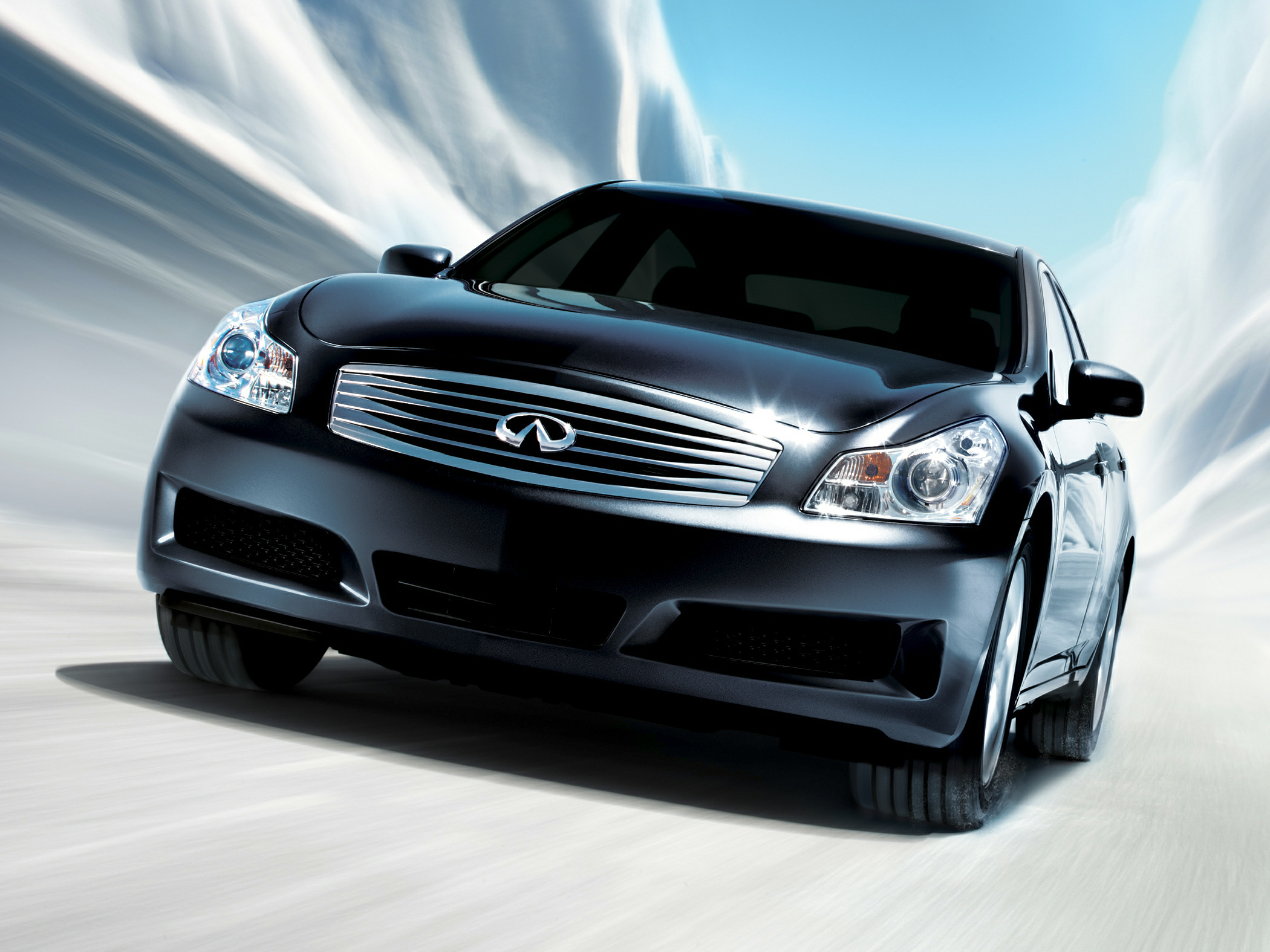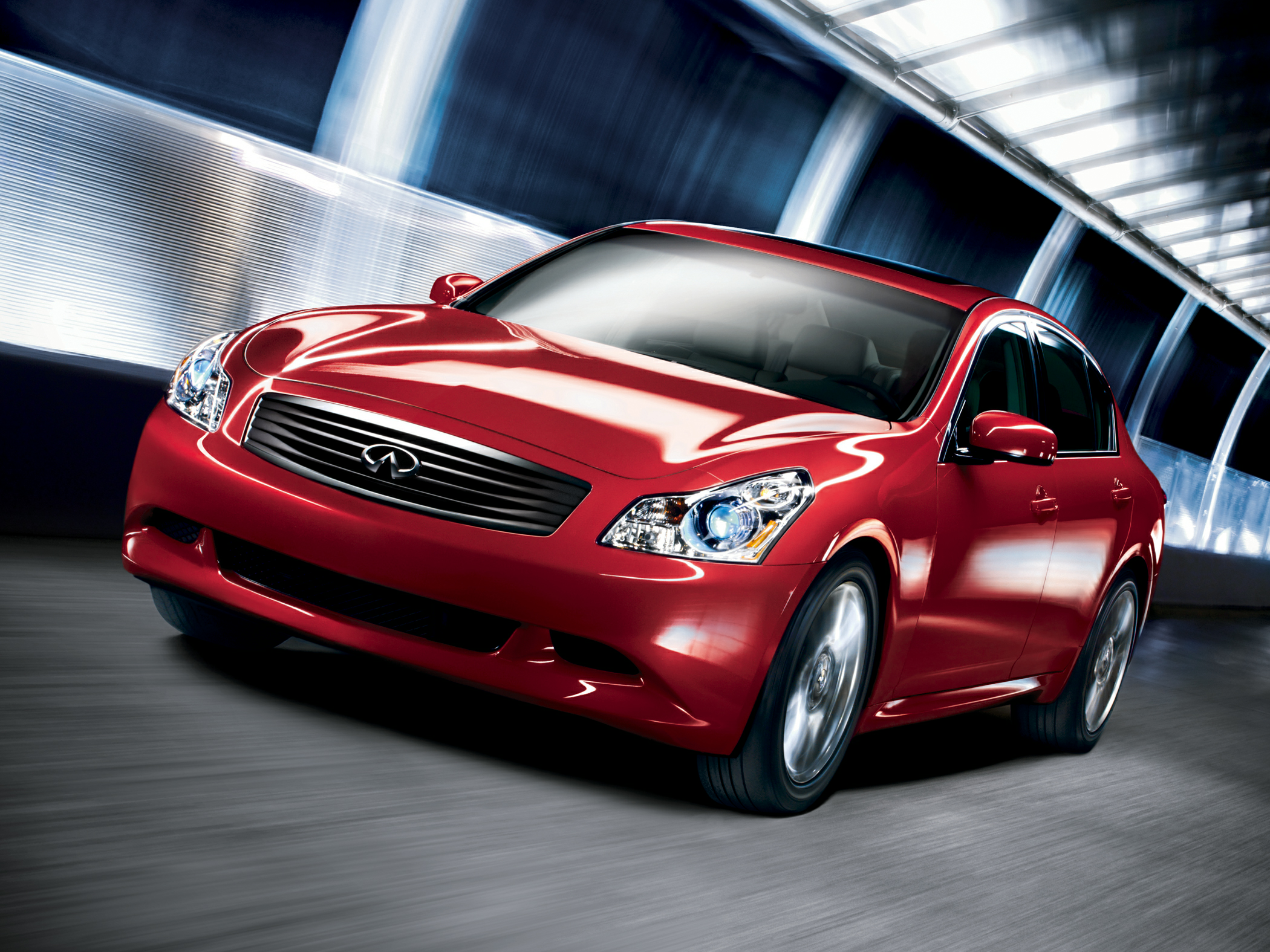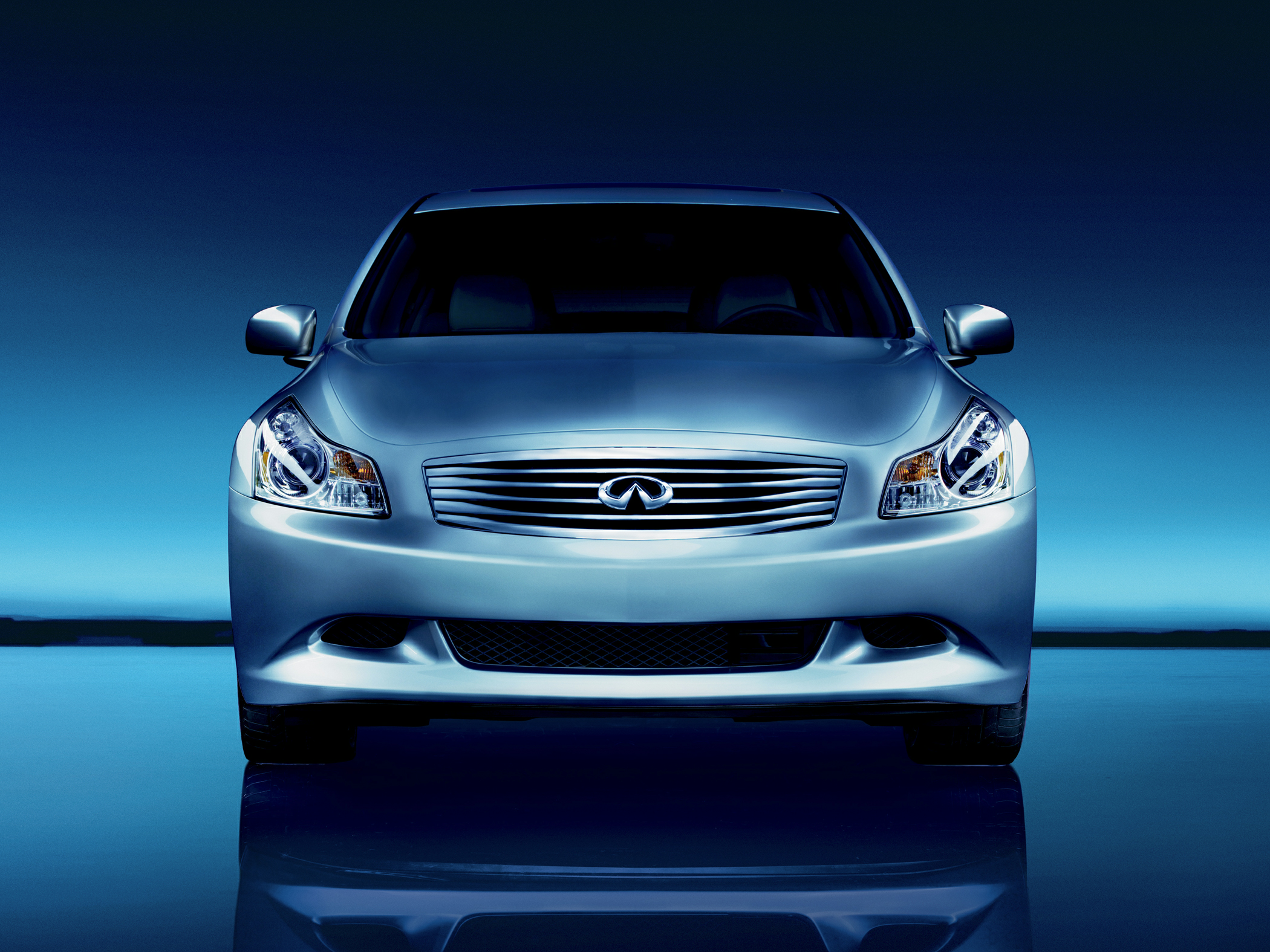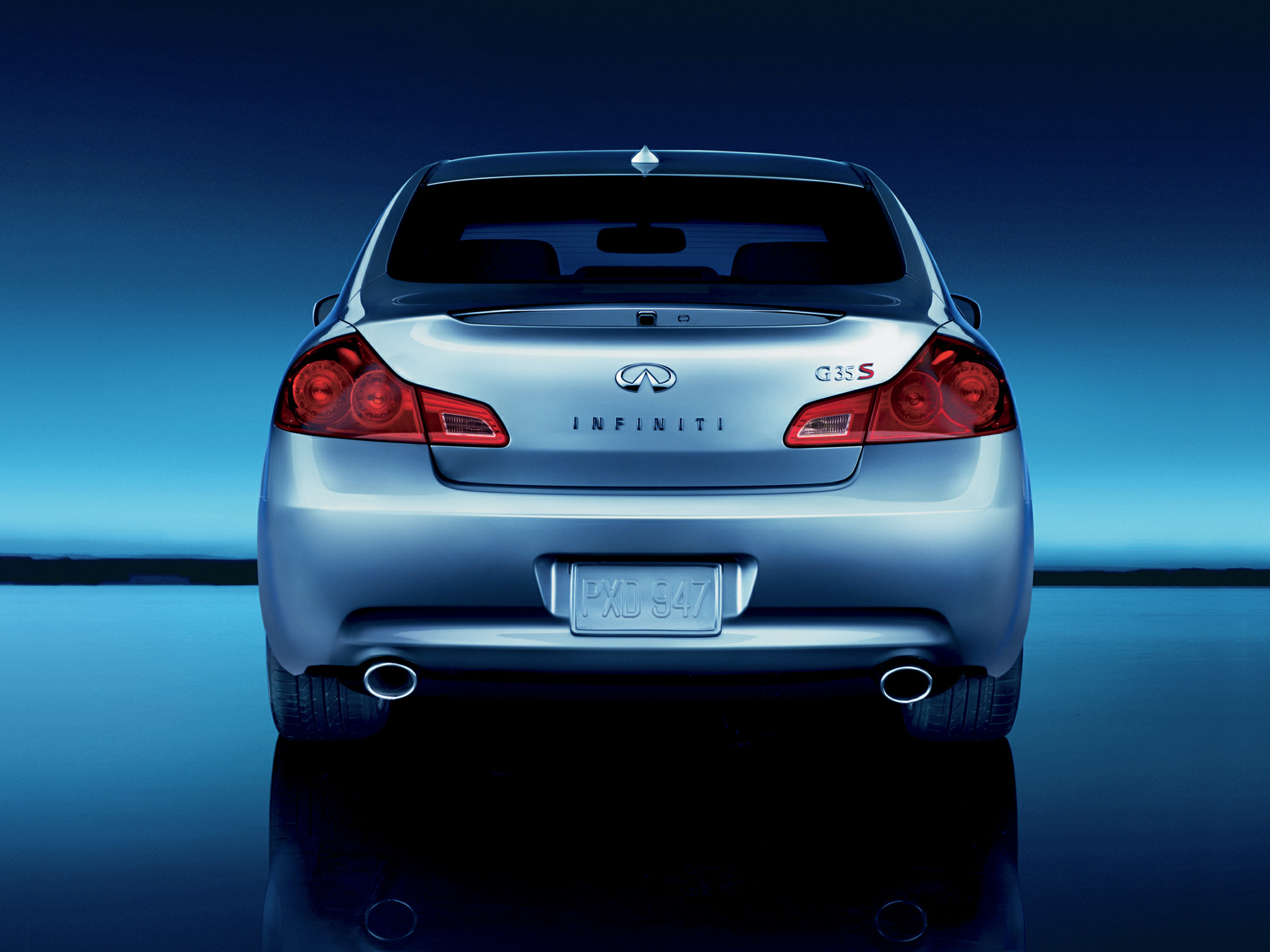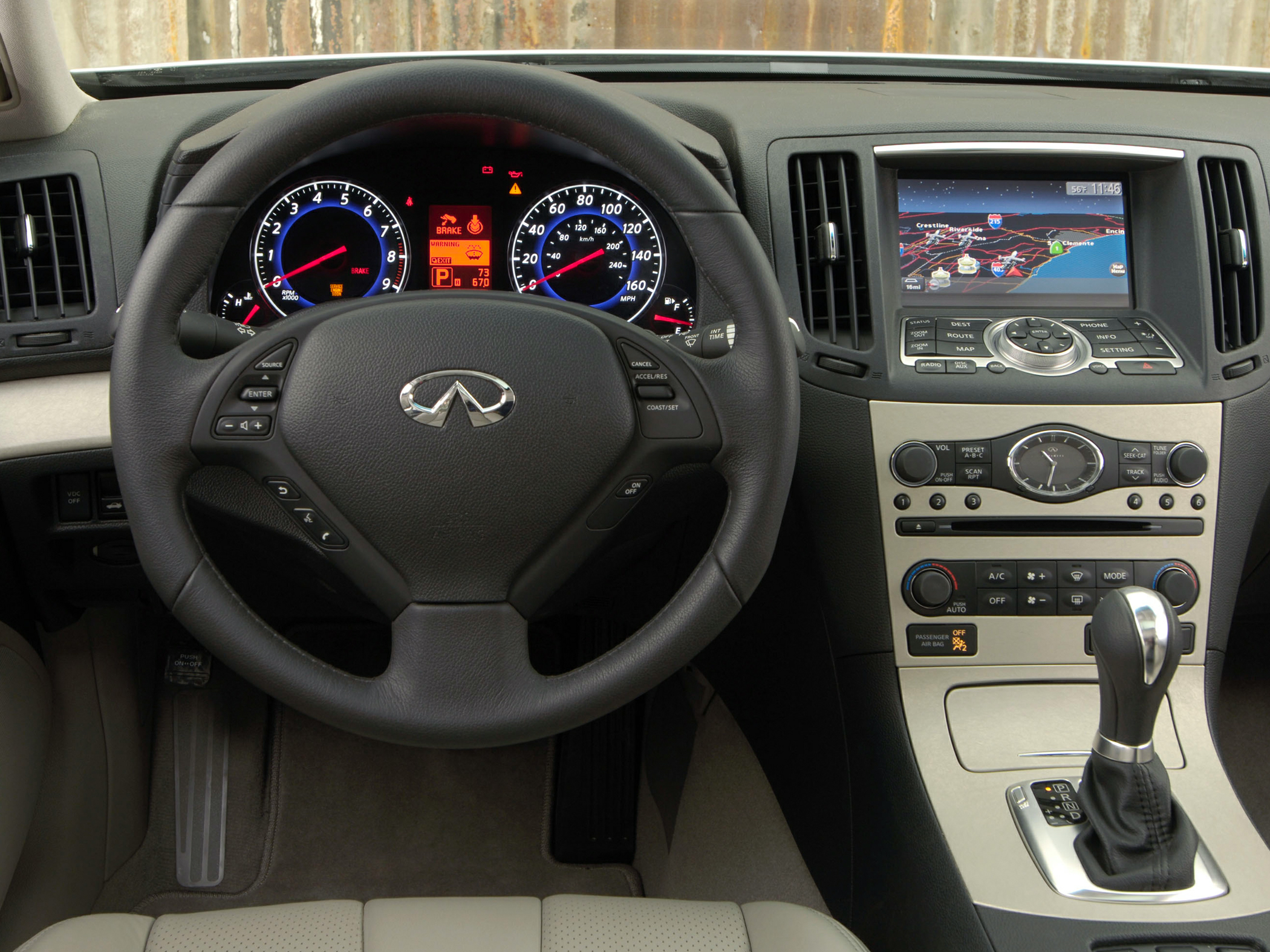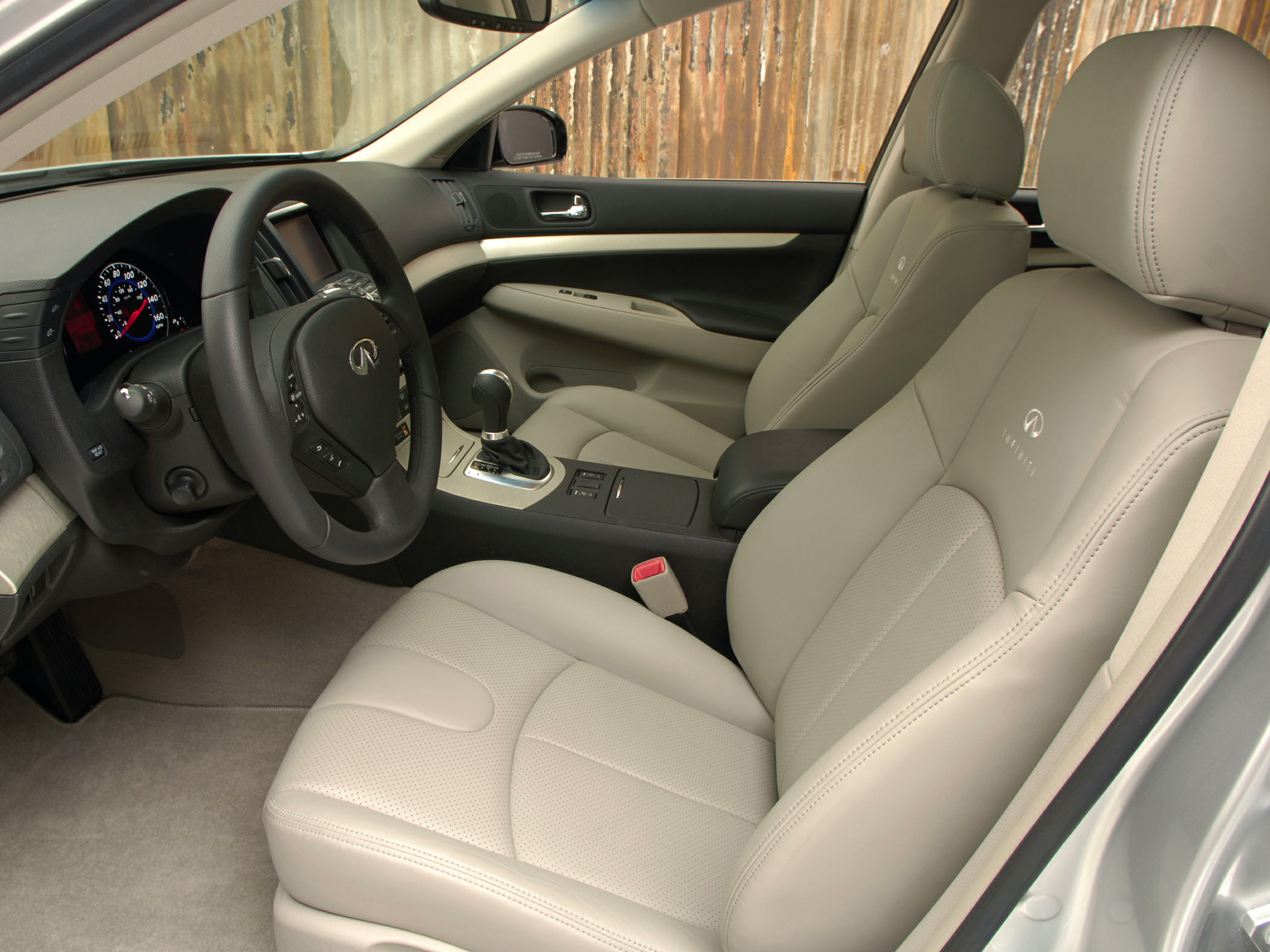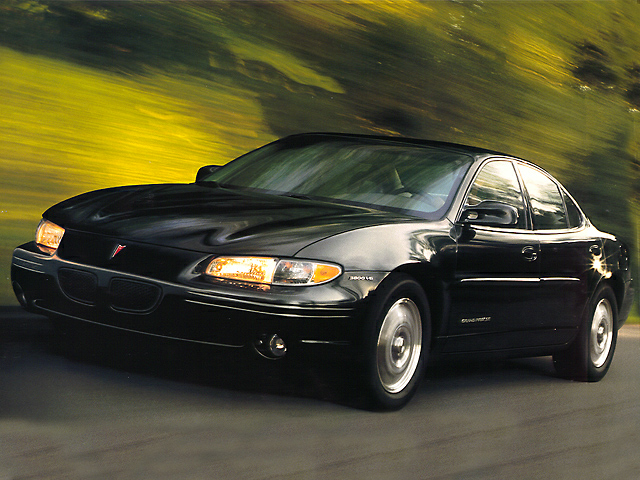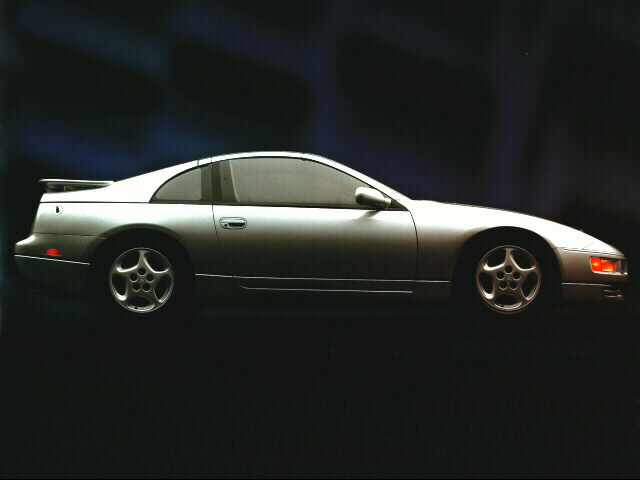In its first full redesign since it took the market by storm in 2002, the Infiniti G35 sedan adds power, updated styling and a greatly improved interior. The sedan has three trim levels: base, Journey and Sport, the latter available with either a manual or an automatic transmission. The all-wheel-drive version, the G35x, is its own trim level of sorts, available only with an automatic transmission. As redesigns go, the 2007 isn’t a knockout, but that’s mainly because Infiniti’s best-selling model was already so good. (The G35 coupe will continue in its current form until the second-generation model comes later this year as a 2008. This review covers the sedan only.)
The “larger” 2007 model is really just a few fractions of an inch bigger in a couple dimensions, so for practical purposes it’s the same size. It now more closely resembles the successful M35/M45 midsize sedan, with shapes that are more angular, less organic. The latest treatment of Infiniti’s horizontal-bar grille (always slightly different and interesting) emulates sword blades. A character line runs from the front wheel arch and along the door handles and drapes over the rear wheel arch.
The Sport trim level has a different front bumper and more prominent side sills. Always peculiar in the previous generation — despite incremental changes — the rear end now resembles the coupe’s and looks like it belongs on this car. Now, if someone suggested a chrome spoiler to me, I’d expect to like it as much as I do the giant stirrup Subaru puts on the trunk of its otherwise inoffensive WRX STi. Now that I’ve seen it, I think the subtle chrome piece looks pretty good on the G35. If that’s not enough spoiler for you, you can add a body-colored one to the G35 Sport that arches over the chrome.
The standard wheels are 17-inch aluminum alloy wheels. The Sport trim level steps up to 18-inch rims.
Engine power is relatively simple: Add more and the car goes faster. Automakers have been doing this throughout history to make otherwise lackluster vehicles more interesting. The real art and science is in the ride and handling. This is the aspect of the first G35 that put it in league with the BMW 3 Series, the company for which handling is a claim to fame. The G35 followed the 3 Series formula: rear-wheel drive, balanced weight distribution, excellent road-holding and solid six-cylinder power. It had a double-wishbone front and multilink rear suspension, both with stabilizer bars. (The 3 Series uses a strut-based front end, but you get the idea.) Infiniti adopted the elements and implemented them well, and an unprecedented 3 Series competitor was born.
The 2007 model changes little of this, though Infiniti says the platform — itself in its second generation — is 36 percent stiffer. On a variety of road surfaces, I found the four-door Infiniti G35 to feel solid, though not demonstrably more so than the previous generation. There was no great improvement in the car’s ride or handling, but that’s mainly because it was already good. I drove a manual Sport, and a Journey and G35x with standard automatic transmissions. The Sport had the best road-holding because of its firmer springs and standard summer performance tires (optional on the Journey trim level). Anyone who intends to drive in winter conditions (including freezing temperatures, not just snow or ice) will have to forego these tires or get an additional set of all-season or winter treads. Summer tires are bad news in winter, and rear-wheel drive makes it a double-whammy. Appropriately, the G35x comes only with all-season tires.
The all-wheel drive performed well enough for me in spotty rain. Cars.com reviewer and chief blogger David Thomas, who had the G35x during a snowy week in Chicago, said, “The all-wheel drive keeps the G35x more planted and secure in bad weather, but it also mutes the sporting nature of the rear-wheel-drive G35. The G35x won’t be the driving enthusiast’s choice, but the powerful engine still delivers enough thrills when powering all four wheels to make it a good compromise for the practical owner in cold-weather states.” Take note that AWD characteristically increases the car’s turning diameter to 36.1 feet from 35.4 feet with rear-wheel drive.
The Sport trim has a limited-slip differential, and all models have a standard electronic stability system. The Sport’s system is calibrated differently to cooperate with the limited-slip properties.
Across the board, I sensed more understeer in these cars than I remember from the first generation, with the best balance in the Sport and the worst in the G35x. I could even things out by sending more power to the rear wheels, but it was a greater effort than before to keep the nose from pushing wide. A check of the specifications shows that the car’s weight has shifted forward since its 2003 debut, when its weight distribution was 52/48 percent (front/rear). BMW usually shoots for an even 50/50 split, but Infiniti said the G35’s distribution made it safer — equaling a 50/50 split when the tail’s inertia brings it around in a turn, rather than a heavier rear that could fishtail. In the 2007 model, the weight distribution is between 53/47 and 54/46 percent — with the manual the most balanced and the G35x the least.
Buyers might consider the Four-Wheel Active Steer feature that’s a $1,500 stand-alone option on the G35 Sport automatic. It steers the rear wheels in the opposite direction of the front pair at moderate speeds for maneuverability, and in the same direction at highway speeds for quick, stable lane-changing. It works with variable-ratio front steering; the idea is to provide sharper steering at lower speeds for ease of handling. For comparison, the regular cars have about three full turns in their steering wheel. The 4WAS wheel spins only 2.5 turns from one side to the other.
Intended to be the sportiest version, the G35 Sport with 4WAS has the firmest suspension, according to Infiniti. I didn’t drive this version, so I can’t share any impressions.
Though it’s still a 3.5-liter V-6, the 2007 Infiniti G35 sedan’s engine is 80 percent new, Infiniti says. For 2007, manual and automatic models use the same engine; previously, the automatic got less power, as shown below. Compared to the more-powerful 2006 engine, in the manual G35, output has increased by 8 horsepower and 8 pounds-feet of torque. But if you look closely, the specs reflect a change in power delivery.
| New & Old 3.5-Liter V-6 Engines |
Horsepower
(@ rpm) |
306
@ 6,800 |
298
@ 6,400 |
280
@ 6,200 |
Torque
(lbs.-ft. @ rpm) |
268
@ 4,800 |
260
@ 4,800 |
270
@ 4,800 |
| Redline (rpm) |
7,600 |
7,000 |
6,600 |
| Recommended gasoline |
premium
(91 octane) |
premium
(91 octane) |
premium
(91 octane) |
| G35 rear-wheel drive |
19/27 (manual); 19/26 (auto) |
19/26 |
18/25 |
| G35x all-wheel drive |
19/25 |
— |
17/24 |
Maximum horsepower has climbed 400 rpm up the rev range to 6,800 rpm. The redline also has increased significantly. I thought I experienced a change in the acceleration’s character — mainly a less robust launch — which would result from decreased torque at low engine speeds. Of course, it could also result from the car’s curb weight gain of 200 pounds over the previous generation.
Infiniti describes the experience as “acceleration swell,” to suggest an increasing rate of acceleration all the way up to the engine’s redline. In other words, it pushes you back in your seat and keeps on pushing, rather than an initial thrust that dies down. Skeptical journalists immediately accused Infiniti of trying to spin a relative lack of low-rev torque. Acceleration swell, they suggested, wasn’t necessarily swell acceleration. I actually didn’t mind it. It gives a feeling of anticipation, not unlike that of a turbocharged engine, though without unpredictable lag.
It bears noting, however, that BMW, after being embarrassed by its competitors’ standard power, finally caught up by offering an optional 300-hp twin-turbo inline-six in the 335i. I regularly dissuade shoppers from comparing output ratings between two different models, because it doesn’t tell the whole story. I’ll make an exception here in citing the 335i’s 300 lb-ft of torque at 1,400 rpm. This is a completely different experience than 268 pounds-feet at 4,800 rpm, and one I and many driving enthusiasts prefer in our 0-30-0 mph, 0-40-0 mph, 0-60-0 mph lives.
Don’t get me wrong: I’m still a big fan of the Infiniti G35’s engine; it beats the base 328i in power and price — and costs $7,000 less than the 335i turbo.
Where I think the G35 has the edge is in its standard six-speed manual transmission, or at least its shifter. Standard in the Sport trim level, it has the right height and throw, and it feels more connected than that of the 3 Series. The clutch pedal, on the other hand, is grabby. I recall the previous generation’s being more progressive and controllable.
The automatic, your only choice on the other trim levels and the G35x, is a five-speed with a clutchless-manual mode that relies on the gear selector. The automatic Sport trim level adds magnesium shift paddles. Being large and fixed to the steering column rather than the steering wheel itself means the paddles are always where you can find them — nice. Knocking the gear selector to the left engages a Sport mode that lets the engine rev higher before upshifting and makes kickdown easier to effect. Pushing forward or back shifts up or down and enters a full manual mode. The paddles can be activated likewise, or you can temporarily trigger a manual mode when in Drive; it returns to Drive promptly.
Under heavy acceleration, I thought the transmission was conservative in its upshifts, favoring smoothness over power delivery to the drive wheels. Kickdown response was a bit slower than I’d like, too, but both could result from the “learning” transmission not adapting quickly to the way I was driving. (Most of my drive time was in the manual.) Downshifts employ rev matching that automatically gooses the engine speed before the gears mesh, providing exceptionally smooth downshifts and reduced wear.
The four-wheel disc brakes perform well, with linear response and decent pedal feel. Naturally, they include ABS, electronic brake-force distribution and brake assist. The Sport trim has larger rotors all around.
The Infiniti G35 now boasts an improved design and higher quality materials than the 2006 version. Infiniti wisely gave up on the fake stuff and went with real, textured-aluminum trim. Also available is semi-gloss African rosewood trim like the M35’s. The G does the M one better by substituting quality steering-wheel toggle switches and actual separate buttons where the M has cheapo toggles and rubber-membrane-style buttons. The G35 has a warmer environment overall than the 3 Series.
The main power seat controls are in the conventional location on the seat cushion close to the door, replacing the inboard, upward-facing toggle switches that attracted dust and debris. Leather seats are standard, as are a driver’s height adjustment and a manual tilt/telescoping steering wheel. If you want power tilt/telescope or seat heaters, you’ll need the optional Premium Package — or the G35 Sport, which has heated sport bucket seats with power-adjustable side bolsters and thigh extension. (I thought the Sport’s seat bolsters were already too snug, and they only get more so with adjustment.) Aluminum pedals also come on the Sport.
The G does away with the old ignition and exclusively uses an Intelligent Key transmitter fob — which can stay in your pocket or purse — and dashboard-mounted start button. The optional navigation system can be controlled via voice, touch-screen or a “joydial” controller. Not all Infiniti nav systems have the touch-screen capability, so I’m glad to see it here. The dial/knob/button thing isn’t the worst I’ve used, but it’s immediately under the touch-screen. I understand that automakers want the displays higher and closer to one’s line of sight, but shouldn’t the dial interface be closer to the driver? That’s one aspect Audi and BMW have right with their otherwise problematic controllers.
Among the changes for 2007 is increased backseat legroom, which edges out the 3 Series and slaughters the Lexus IS and Volvo S60. It also beats them all in headroom by inches. The Infiniti bests the BMW and Volvo in front legroom, and ties the Lexus — but the Lexus sacrifices backseat legroom to do so. The G35’s only downside, and one it shares with most competitors, is a super-high and obstructive center floor hump.
Safety features include front and seat-mounted side-impact airbags for the front occupants and side curtain airbags to protect the front and rear seats. The front seats have active head restraints, which are hoped to result in a better rear-impact crash-test result from the Insurance Institute for Highway Safety (the 2006 model scored Poor for whiplash protection). As of this report, IIHS has conducted a frontal-impact test, yielding a Good score, the highest. A side-impact test is pending.
The Rearview Monitor shows what’s behind the vehicle on the dashboard navigation screen when the automatic transmission is in Reverse. Obviously, this is one expensive option on top of another. The same can be said of the adaptive xenon headlights, which aim in the direction of a turn; they come in the Technology Package that in turn requires the Premium Package — all told, more than $3,000.
The Tech Pack also includes adaptive cruise control and “preview braking.” Adaptive cruise maintains a preset distance from the car in front of you. Preview braking uses the system’s radar to determine if your Infiniti G35 is closing quickly on an obstacle and “pre-loads” the brake assist so the slightest brake-pedal pressure will trigger a full-on panic stop. Preview braking works even when cruise control is off.
The G35 sedan’s trunk has actually shrunk by more than a cubic foot to 13.5 cubic feet, but that’s still better than the BMW and Lexus. However, the G35’s backseat doesn’t fold to extend the trunk forward; there’s only a pass-thru behind the flip-down armrest. I give BMW grief for charging extra for this feature, but at least it’s there. It’s standard on the Audi A4 and the Volvo S60, which throws in a folding front passenger seat to boot. The Lexus IS, though, is in the doghouse with the G35.
The G35 offers many features you can peruse by clicking on the buttons above on the left. Of particular note is the approach to stereos. All models have an auxiliary input for an MP3 player — a must. The base G35 comes with a CD player, and higher trims get a six-CD changer in the dashboard.
Optional is a Bose premium stereo called Studio on Wheels, which is claimed to be the first factory stereo with three-way door speakers: a tweeter, midrange and woofer in each front door. More interesting is its billing as a “purist two-channel system.” Two-channel … you know, stereo. It’s intended to present a three-dimensional soundstage out in front of the front occupants, which it does pretty well. I particularly appreciate how the 10-inch door woofers keep the bass anchored in the front, when in many car stereos it drifts into the back where larger woofers typically are. I detail Studio on Wheels because it amuses the hell out of me. It flies in the face of the rest of the industry’s marketing blitz: More speakers! More channels! More surround sound! Included in this wave is Infiniti’s own M35/M45, whose 14-speaker, 5.1-channel digital stereo also comes from Bose — a company that for decades has trumpeted the oxymoronic “Stereo Everywhere” approach.
Other audio oddities include the displacement of the six-CD changer to the trunk if you get the in-dash navigation system (and I thought two-channel was retro) and the addition of a 9.5-gigabyte hard drive and a slot for a compact flash card, all intended for MP3 playback. Someone out there is sure to appreciate these storage options, but most will be more than happy with the auxiliary MP3 player input.
As I stated above, the Infiniti G35 was so strong to begin with that it’s difficult to get emotional about this incrementally upgraded version. If you’ve never driven the earlier one, though, it stands to reason that you’ll get plenty emotional. In my opinion the previous generation’s greatest shortcoming was its interior, and that’s now a step ahead. Infiniti really covers all the bases with this model: It’s rear-wheel drive, for sporty flavor, yet there’s all-wheel drive so we Snow Belt drivers aren’t frozen out, as it were. It’s larger than some luxury sport sedans, but still manageable and affordable for what you get standard. My only gripe about pricing is the cost of the option packages. They include a lot, for sure, but I think it’s safe to say most buyers would prefer more a la carte selections. If you want every feature in a package, you’re certain to save, but if you don’t, three stand-alone features — even if priced higher per unit — will cost less overall.




